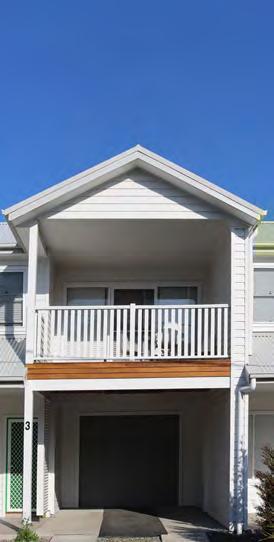DRAFT Local Housing Strategy



Maitland City Council acknowledges the Wonnarua People as the Traditional Owners and Custodians of the land within the Maitland Local Government Area and pays respect to all Aboriginal Elders, past, present and future.

Demand for housing in Maitland has grown significantly over the past decades, driven by growing population, lifestyle attractors, relative affordability and locational advantages.
Maitland is currently home to approximately 90,230 residents (ABS 2021). Maitland has a relatively young population with the median age of residents being 36 years. Families with children, living in separate houses, represent 45% of total households. Population projections indicate an increase of 54,800 residents by 2041 (DPE 2022). This translates to a requirement for approximately 25,200 additional dwellings over the next 20 years.
Future housing supply in Maitland is guided by the Hunter Regional Plan 2036 (currently under review), the Greater Newcastle Metropolitan Plan 2036 and the Maitland Local Strategic Planning Statement 2040+. Delivering the existing urban release areas and investigation for infill development opportunities in urban areas have been identified in the regional and metropolitan plans as key priorities for Maitland.
Maitland’s population is growing and will continue to grow and change along with the rest of the Greater Newcastle metropolitan area. Future growth needs to be planned and managed to meet the housing and employment, services and infrastructure needs of our residents and to improve the efficiency of how our city functions. If not planned for, growth can lead to pressure on existing housing, services and the environment, resulting in adverse consequences on housing affordability and liveability.
Like many other Australian regional cities, Maitland’s housing stock is dominated by single detached dwellings; approximately 87% of total dwellings. Currently, 49% of our total households are small (i.e. lone and couple only household), but only 14% of all dwellings in Maitland accommodate one or two bedrooms. This highlights a mismatch in the demand for and supply of smaller dwellings in Maitland.
Our ageing population, changing household structure and shrinking household sizes emphasise the need for a greater mix of housing types within the city to meet the needs of smaller and more diverse households. Providing a range of diverse housing types will allow Maitland to remain as an attractive place to live for residents in all stages of life and also to raise a family.
The Maitland Local Housing Strategy provides a framework for the provision of housing across the city over the next 20 years to meet the housing needs of our communities. The Strategy is consistent
with the long-term land use vision established in the Maitland Local Strategic Planning Statement for the city. The Strategy also aims to achieve the housing priorities identified in the Hunter Regional Plan and Greater Newcastle Metropolitan Plan to deliver better housing outcomes for local communities.
The Maitland Local Housing Strategy 2041 aims to provide the right type of housing in the right locations with essential infrastructure and services to meet the housing needs of our growing and changing population over the next 20 years.
The Strategy builds on seven planning principles that serve as a foundation for future planning and decision making to achieve better housing outcomes across the city.
1. Provide the right type of housing in the right locations to suit our growing and changing population
2. Provide greater housing choice by encouraging a range of different housing types, sizes and tenures in appropriate locations
3. Encourage infill housing and increased densities in different neighbourhood contexts to facilitate a greater mix of housing types and 15-minute neighbourhoods
4. Achieve high quality urban design and better planning outcomes from all forms of residential development
5. Increase the supply of affordable housing in Maitland through public and private development
6. Promote resilient and environmentally sustainable outcomes through appropriately located and designed housing development
7. Plan and coordinate the timely delivery of infrastructure required to enable greenfield release areas, and make more efficient use of existing infrastructure in established urban areas for infill housing.
The Strategy guides the provision of housing across the city over the next 20- years, and ensures that the city has a diverse, affordable, well designed, sustainable and resilient housing supported by infrastructure and services.
Council recognises that the future directions and actions outlined in this Strategy require a significant level of collaboration and partnership with the community, development industry, service providers, not-for-profit organisations and all levels of governments to successfully implement it over the coming years.

1.INTRODUCTION
3.OUR APPROACH
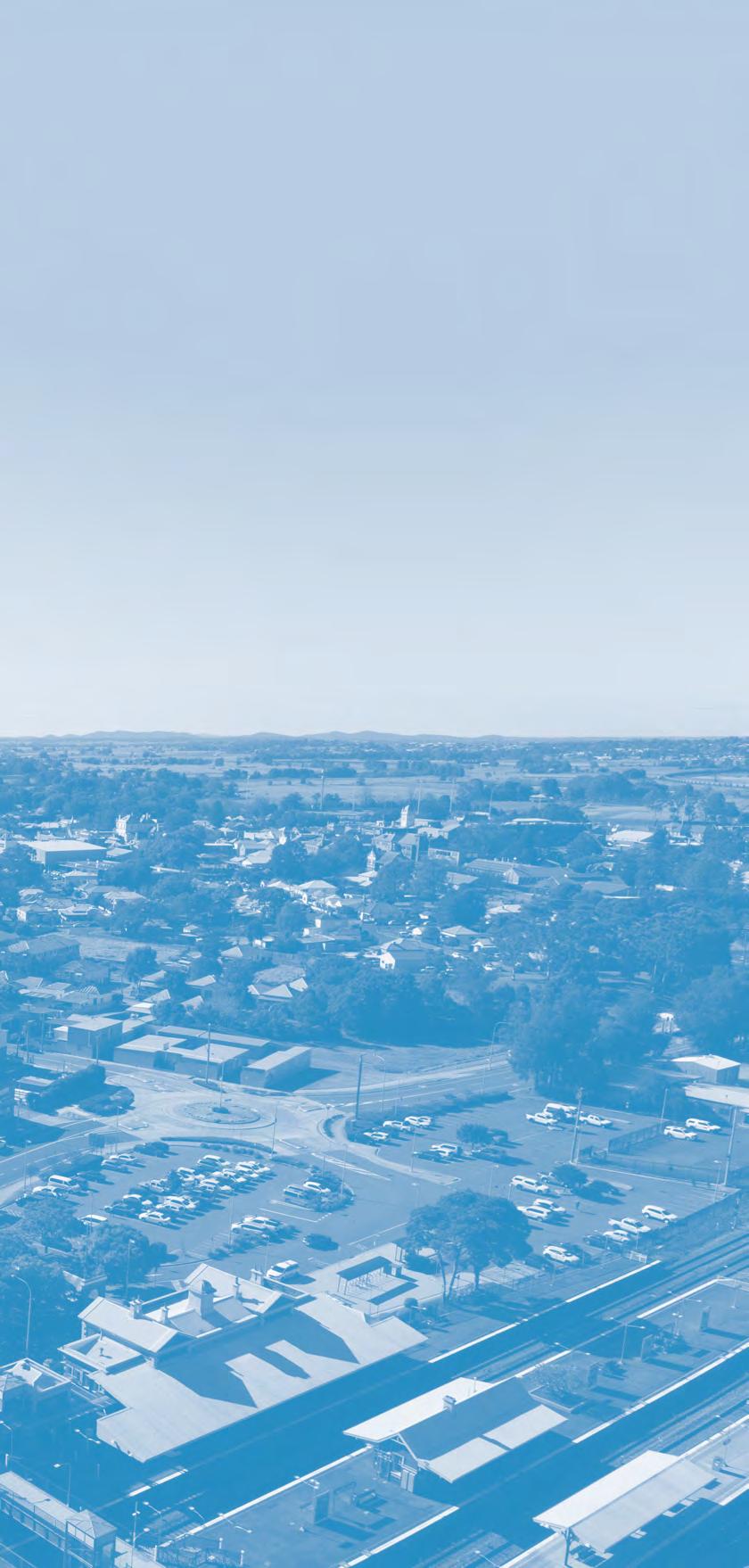
ABS Australian Bureau of Statistics
CSP Community Strategic Plan
DCJ NSW Department of Communities and Justice
DCP Development Control Plan
DPE NSW Department of Planning and Environment
EP&A Act Environmental Planning and Assessment Act 1979
ERP Estimated Resident Population
FSR Floor Space Ratio
GNMP Greater Newcastle Metropolitan Plan
HRP Hunter Regional Plan
LALC Local Aboriginal Land Council
LEP Local Environmental Plan
LG Act Local Government Act 1993
LGA Local Government Area
LSPS Local Strategic Planning Statement
MCC Maitland City Council
MHE Manufactured Home Estates
MUSS Maitland Urban Settlement Strategy
SEPP State Environmental Planning Policy
OECD Organisation for Economic Co-operation and Development
Affordable housing
Affordable housing is used to describe housing that is owned by NSW Government or a registered community housing provider and rented to a mix of very low to moderate income households.
Catalyst areas
Catalyst areas are places of metropolitan significance where a planned approach will drive the transformation.
Future investigation area Investigation areas where detailed studies and investigations are required to confirm the site’s suitability for future residential purposes.
Greenfield housing
Housing affordability
Infill housing
Medium density housing
A new housing development area that has not been previously developed or used for other urban purposes.
Housing is considered affordable where the cost of rent or paying the mortgage does not represent more than 30 per cent of the gross income of a very low to moderate income household.
Development in areas already used for urban purposes. Specifically, the reuse of a site within the existing urban area for new housing.
Medium density housing refers to housing types, often developed as multiple dwellings on a single block, for examples, town houses, villas and apartment blocks of up to 3 storeys.
Planned investigation area
An investigation area has been identified for future residential purposes and this land would be ready to proceed through Gateway process to rezoning.
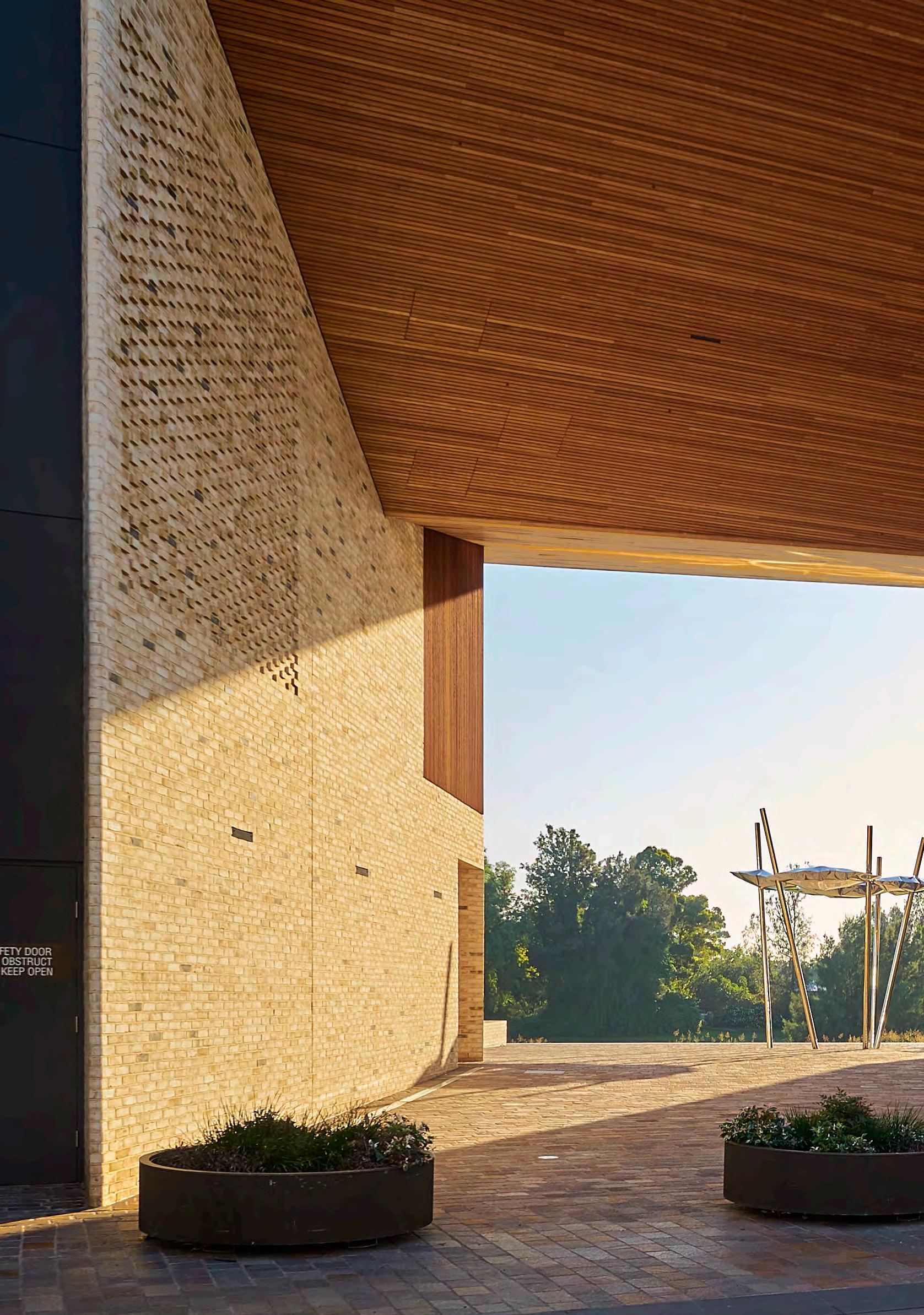
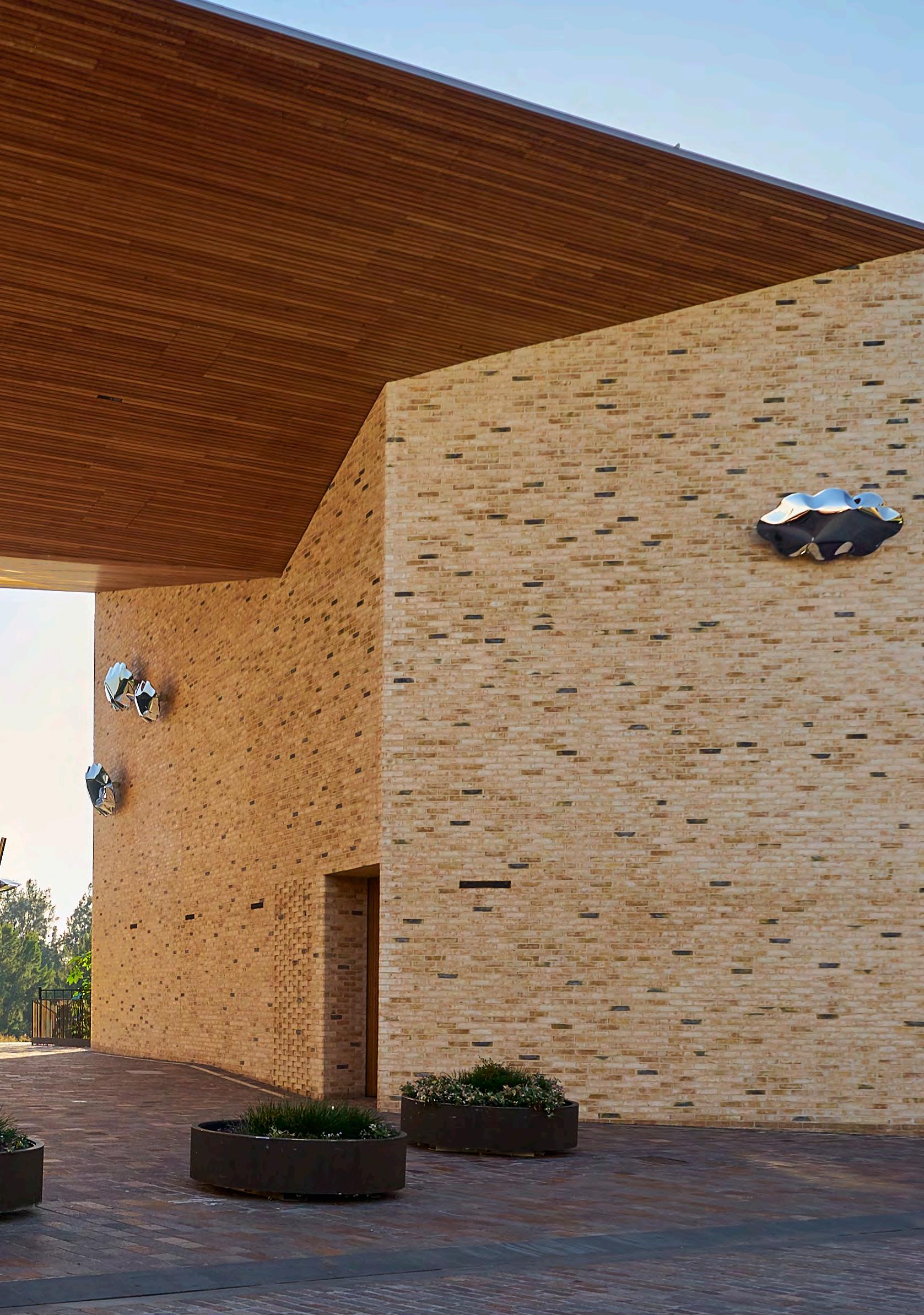
Maitland is one of the fastest growing inland cities in Australia and is home to approximately 90,230 residents (ABS 2021). The city is expected to have over 144,550 residents by 2041 (DPE 2022). As it continues to grow, the residential growth will need to be planned and managed in a way that meets the changing needs of our communities.
Our growing population brings both opportunities and challenges. The population increase will support growth in the local economy, creating diverse employment opportunities and reinforcing Maitland's role as a major regional strategic centre, servicing the hinterland and rural areas of the Hunter Region and beyond. It also places pressure on our environment, rural land, transport corridors, services and amenities.
A strategy to identify, prioritise and deliver required housing and infrastructure is fundamental to capitalise on our growth potential. It is also critical for liveability and economic resilience of the city to remain an attractive place to live and work, and to raise a family.
'Access to safe and secure housing is a basic human right. Housing is a key contributor to the socio-economic wellbeing and health of individuals and communities.'
United Nations 2009, The Right to Adequate Housing
The Maitland Local Housing Strategy 2041 sets out a framework to guide the growth and change of our residential areas over the next 20 years. The Strategy builds on the long-term land use vision established in the Maitland Local Strategic Planning Statement 2040+. This vision aims to provide the right type of housing in the right locations, supported by essential infrastructure and services to support population growth and change at the same time maintaining and enhancing local character.
The key objectives of the Strategy are to:
• Identify future housing needs and gaps within the city.
• Identify additional housing opportunities to sustainably accommodate future population growth.
• Develop an evidence-based planning and policy framework to guide future planning decision related to housing.
• Inform future reviews of the local planning framework and metropolitan and regional plans
• Provide directions and certainty to residents and the development industry with regards to where different housing types are supported and encouraged.
• Align infrastructure planning and delivery to support planned growth.
The Strategy recognises and responds to evidence about what types of housing will be needed for our growing and changing population, where it can be best located and how Council will deliver better housing outcomes, together with its stakeholders.
The Department prepared the Local Housing Strategy Guideline 2018 to assist local councils in developing their local housing strategies. The guideline has been considered and adopted to suit our local context.
In 2020, Council endorsed its first Local Strategic Planning Statement. The preparation of a Local Housing Strategy is a key action identified in this Statement.
The Strategy draws together the State’s planning priorities articulated in the Hunter Regional Plan and the Greater Newcastle Metropolitan Plan, and our own local priorities articulated in the Maitland 10+ Community Strategic Plan and Maitland Local Strategic Planning Statement. It also outlines how these priorities are to be delivered and implemented at local level in responding to our local housing requirements into the future. The relationship between state, regional, metropolitan and local strategies and plans is illustrated in Figure 01.
NSW
• Environmental Planning and Assessment Act 1979
• State Environmental Planning Policies (SEPPs)
• Housing 2041: NSW Housing Strategy
Regional
• Hunter Regional Plan 2036
• Greater Newcastle Metropolitan Plan 2036
• Draft Hunter Regional Plan 2041
Local
• Maitland Local strategic Planning Statements 2040+
• Maitland Local Housing Strategy 2041
• Maitland Rural Lands Strategy 2041
• Maitland Local Environmental Plan 2011
• Maitland Development Control Plan 2011
Figure 01: Relationship between state, regional, metropolitan and local planning framework
The United Nations’ the Agenda for Sustainable Development 2030 provides a shared blueprint for peace and prosperity for people and the planet, now and into the future. At its heart are the 17 Sustainable Development Goals and Maitland Local Housing Strategy 2041 contributes to the realisation of the SDGs relating to housing:
Figure 02: The United Nations’ the Agenda for Sustainable Development 2030

Between 2019-2020, Council conducted an extensive community and stakeholder engagement to inform its first Local Strategic Planning Statement. This engagement had an overwhelming response from the community and other stakeholders. The findings of this engagement have been used to inform the Local Housing Strategy 2041.

Key messages from the local community and other stakeholders with regard to housing include:
• There is limited housing diversity within the city
• We need to plan for affordable housing
• There should be a focus on preserving rural and environmental land from urban sprawl
• There was support for densification around centres and train stations
• Heritage preservation and flood free access should be considered
During the 2022 Community Satisfaction Survey, the community were asked what mattered most to them with respect to future housing in Maitland.
Their responses highlighted the following messages relate to future housing in Maitland:
• Appropriate infrastructure (95%), public transport (89%) and housing affordability (86%) were key considerations of respondents for new release areas
• Over 80% of respondents indicated support for better protection of native vegetation (88%), minimising environmental impacts (87%) and maintaining rural setting (81%)
• 71% of respondents were supportive of more diverse housing
• 83% of respondents considered a greater sense of community and increased services as benefits of the provision of additional homes, and traffic and parking were reported ad their highest concerns.
The exhibition of the draft Strategy will provide an opportunity for residents, landowners, developers, government agencies, service providers and other stakeholders to see how Council is responding to their values and expectations and also to review and provide their feedback on draft Strategy.
Council recognises that all stakeholders have an important role to play in achieving better housing outcomes within the city. The Strategy contains a range of future directions, initiatives and actions to ensure that the city is well positioned to provide diverse, affordable and sustainable housing opportunities in the right locations.
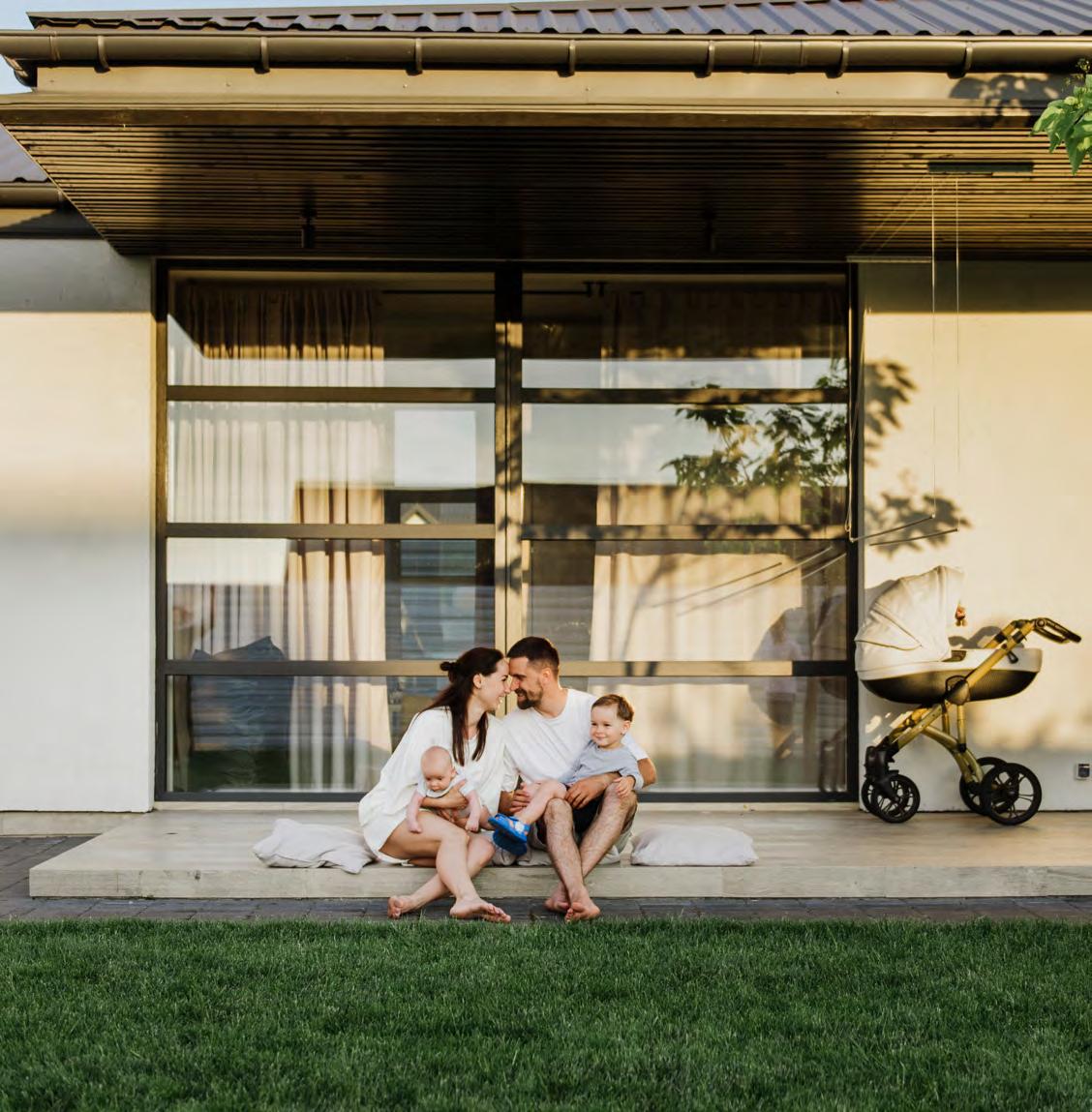
Collaboration with the community, development industry, service providers, not-for-profit organisations and all levels of governments is critical to successfully implementing this Strategy.
Council will be a key member of the wider Urban Development Program for managing land and housing supply and assisting infrastructure coordination across Greater Newcastle. The program will be overseen by a committee comprising representatives from industry, government and councils. It’s role is to identify and remove barriers and disincentives for infill housing, identify opportunities to accelerate the supply of land for housing and employment including improvements to land rezoning, release and servicing and make land use and infrastructure sequencing recommendations that may result in more cost-effective housing and job delivery.
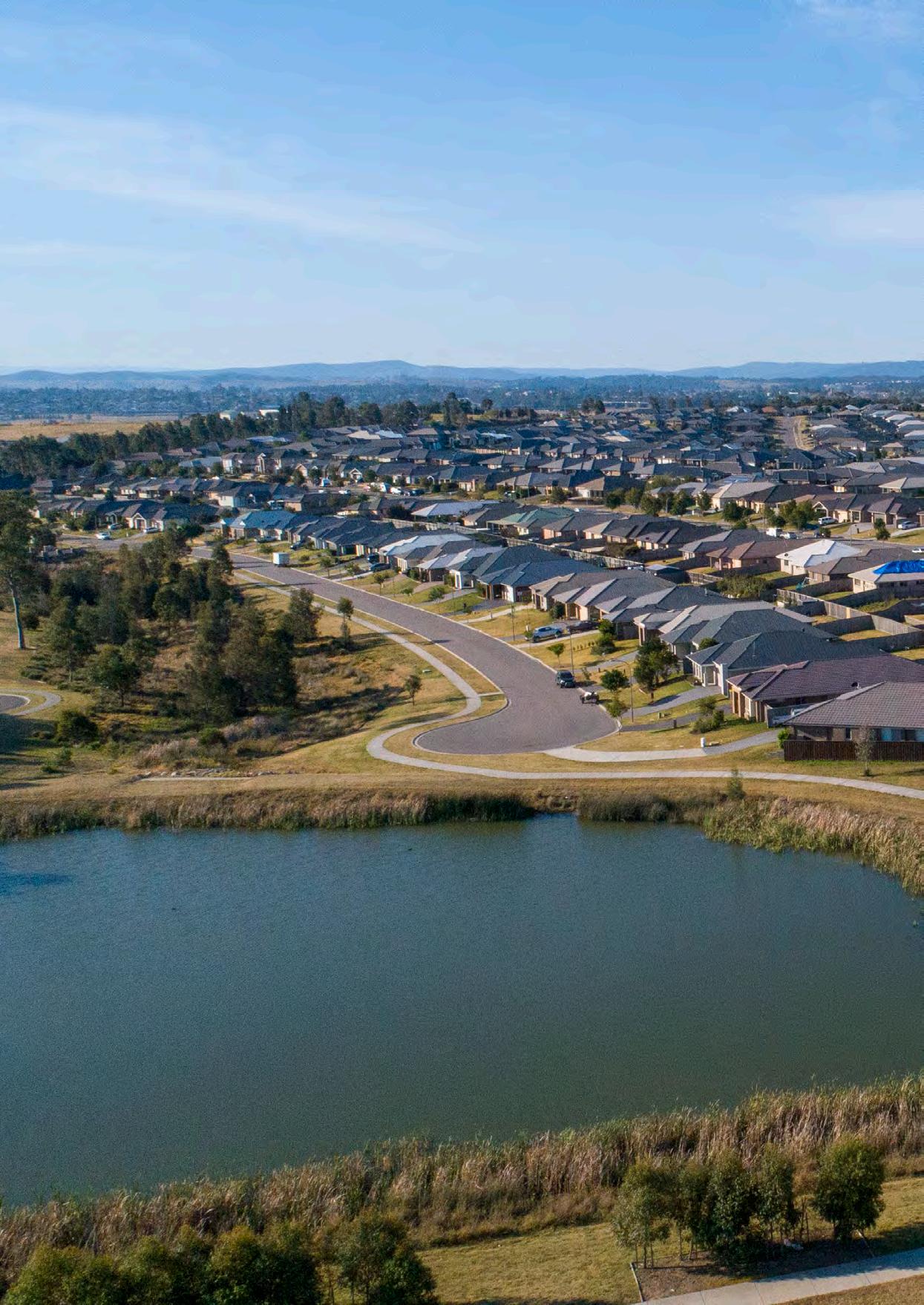

The following describes the key drivers and trends that will in fluence and shape our residential growth and development now and into the future.
The DPE's population projections released in 2022 provides a picture of an areas’ likely population size and its age profile to 2041. Understanding these changes is essential to making informed planning decisions for the future of local communities. These projections are used as a common framework to inform planning policy decisions around land use, infrastructure and service delivery such as hospital beds, school classrooms, roads and public transport.
The DPE estimates that the population of Maitland is projected to grow by an additional 54,800 residents between 2021 (from 89,750) and 2041 (to 144,550), based on a ‘common planning’ scenario. This represents a forecast population growth of 61% or the compound average growth rate of 2.4% for the 20 year period.
The 2021 Census records 90,230 residents in Maitland (ABS 2021). The historical rate of population growth in Maitland has been recorded over 2% between 2001 and 2021. In this context, it is highly likely that Maitland will continue to grow towards the Department’s population projections.
The Greater Cities Commission will be developing a Greater Newcastle City Plan in late 2024 that is expected to set five, ten and twenty-year housing targets for the Maitland LGA. Until then, the Strategy will apply the Department’s population projections as a basis for future planning.
Maitland is one of the fastest growing inland cities in Australia and is home to approximately 90,230 residents (ABS 2021). The population of the city is forecast to grow by an additional 54,800 residents with an average annual growth rate of 2.4% to home over 144,550 residents by 2041 (DPE 2022).
The growing population will require an additional 25,200 new dwellings between 2021 and 2041 to accommodate the forecast population growth. This equates to an average of approximately 1,260 new dwellings per year. The majority of this growth is expected to occur within the existing urban release areas over the next 20 years.
Population growth is the main reason for increasing demand for housing and residential land. Long term population growth will depend on supply being adequately planned for and managed, including the opportunities for densification and infill development in suitable locations within the city.
Today, Maitland is home to a relatively young population, with the median age of residents being 36 years. Families with children living in a separate house are the dominant form of household structure in Maitland, representing 45% of total households (ABS 2021).
The number of residents aged 65 and over is estimated to increase from 13,500 in 2021 to 28,300 by 2041, which is a change of 14,800 or a 110% increase (DPE 2022). The ageing population will have different housing preferences to families with children and will increase the demand for smaller dwelling types over time.
The ageing population means we need to plan for housing that is accessible, adaptable and suitable for older residents close to public transport, centres, health facilities and other amenities.
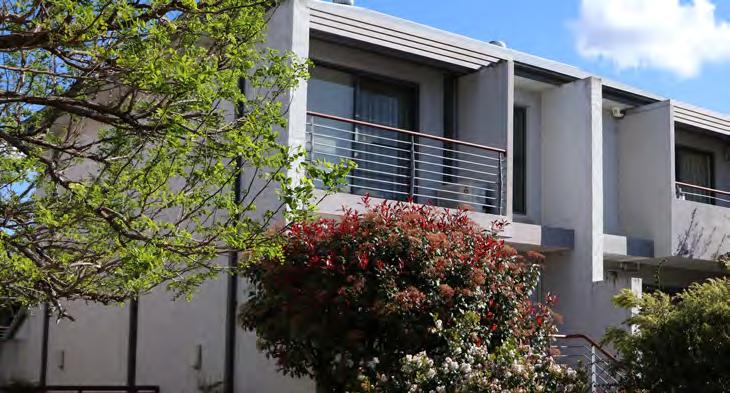
In 2021, Maitland had 34,700 households and is expected to increase by an additional 23,440 households to a total of 57,810 households by 2041 (DPE 2022). The average household size in Maitland was 2.7 people per household in 2021 and this is expected to drop to 2.5 by 2041.
‘Lone person’ and ‘couple only’ households are projected to be the fastest growing household types in Maitland with an expected increase of 13,500 households by 2041. Increasing demand for housing arises partly through changing patterns of household structure and living arrangements of our residents. Smaller households mean the demand for smaller dwellings will increase and the city will need to provide housing choice that suit smaller households. This presents an opportunity to develop new houses in central, infill locations where people can live close to existing services and
Recent residential growth has been characterised by the development of greenfield release areas located on the outer edges of the city. Due to relatively affordable house and land prices in comparison to neighbouring LGAs, there is a predominance of freestanding single dwellings in Maitland.
In 2021, there were 35,420 dwellings across the city with 87% of them being single free-standing houses (ABS 2021). Approximately 85% of total dwellings featured three or more bedrooms and only 14% contained two or one bedrooms. This indicates limited housing choice for lone and two persons households which account for 49% of all households in the city.
A lack of diverse housing makes it difficult for many residents to find suitable housing. The provision of a range of housing in Maitland will assist in attracting a more diverse population, provide housing choice to meet the needs of residents at different stages of life and allow them to remain in the same community when their life circumstance change over time.
The impact of the Covid-19 global pandemic is still evolving and remains uncertain. However, it has forced a shift in how we live and work, with a substantial increase in working from home. If working from home continues in a substantial way in a postpandemic world with some office workers splitting their time between the office and home, it could have significant implications for future planning and designing of houses as well as our neighbourhoods.
The pandemic has accelerated internal migration into the regional centres such as Maitland. It has also highlighted the importance of the traditional neighbourhood, providing a range of local level services to the immediate community, and the importance of housing in order to protect homeless and vulnerable communities during the pandemic.
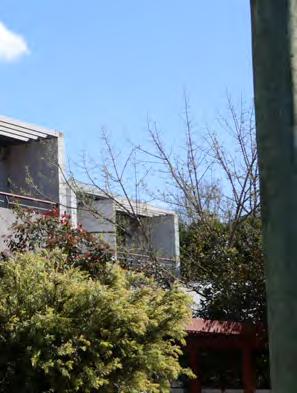
This section briefly outlines the existing policies, plans and strategies that will guide and shape future housing in Maitland.

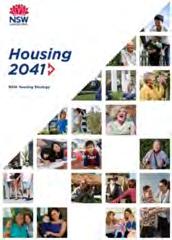
The Housing 2041 sets a long-term vision for better housing outcomes across NSW by providing the right types of housing in the right locations that suits the diverse needs of communities across NSW.
The vision is reflected in the four pillars of:
• Supply: housing supply delivered in the right location at the right time
• Diversity: housing is diverse, meeting varied and changing needs of people across their life
• Affordability: housing that is affordable and secure
• Resilience: housing that is enduring and resilient to natural and social change.
The Hunter Regional Plan 2036 sets the vision for the Hunter to be the leading regional economy in Australia, with a vibrant metropolitan city at its heart. The Plan guides the NSW Government's land use planning priorities and decisions over the next 20 years.
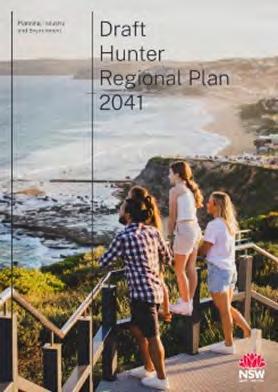
The Goal 4: Greater housing choice and jobs is the most relevant goal guiding the housing outcomes and include the following key directions:
• Direction 21: Create a compact settlement
• Direction 22: Promote housing diversity
• Direction 23: Grow centres and renewal corridors
The Plan identifies Maitland’s significant contribution to greenfield housing supply for the region. The Plan requires local councils to develop local housing strategies to respond to housing needs of each local council (Action 22.3).
Following the 5-year review, the Department has recently exhibited a revised Draft Hunter Regional Plan 2041 to reset its regional priorities to meet changing circumstances and needs including covid-19 pandemic, transition to net zero emissions, and adoption of a place-based approach. It emphasises a consolidation approach to growth over expansion to achieve optimum density. The draft strategy includes a focus on creating 15-minute neighbourhoods, with a target ensuring residents are within 30 minute to a strategic centre. The draft also increases the infill housing target for Greater Newcastle metropolitan area from 60% to 80%. Further, the draft Plan requires Council to work with the NSW Government coordinate services and infrastructure to the existing urban release areas before identifying new urban release areas.
The draft Plan also proposes to split the Maitland local government areas between the Greater Newcastle District and the Hinterland District, where the existing and planned urban areas of Maitland within the Greater Newcastle District, with rural areas north of the Hunter River included within the Hinterland District.
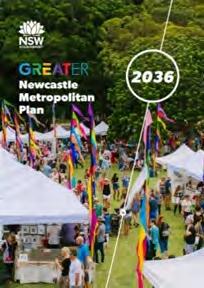
The Greater Newcastle Metropolitan Plan 2036 sets a vision for Greater Newcastle to become one of Australia’s most dynamic and vibrant metropolitan cities. The Plan aligns with the vision of the Hunter Regional Plan and translates its goals into local level actions and provides a coordinated 20-year framework for land use planning within the metropolitan area.
The Plan identifies five key spatial elements and Maitland is located within the ‘Metro Frame’ element of the Plan. The Plan requires local councils to prepare a local housing strategy that:
• reflects the priority to deliver housing opportunities within the existing urban footprint.
• identifies new residential release areas if there is less than 15-year supply of land to meet dwelling projections.
• achieves a minimum residential density of 15 dwellings per hectare in housing release areas, with 25% of lots capable of providing small lot or multi-dwelling housing types.
• identifies individual Council greenfield and infill housing targets that deliver the overall 40% greenfield and 60% infill housing split across Greater Newcastle by 2036.
• ensures social and affordable housing requirements for Aboriginal people, and low and very low-income households are met.
• unlocks housing supply through infrastructure coordination and delivery.
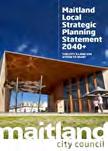
In June 2020, Maitland City Council endorsed its first Local Strategic Planning Statement which sets out a 20-year land use vision for the city and outlines how growth and change will be sustainably managed into the future.
The Statement identifies two key local planning priorities for housing provision as follows:
Local Planning Priority 1: Plan for diverse and affordable housing to meet the needs of our growing and growing community.
• The demographic characteristics of our population is forecast to change significantly over the next 20 years, reflecting ageing in place and the lifestyle choice of our residents. This will create a demand for more diverse and affordable housing options to meet the changing needs of our residents.
Local Planning Priority 2: Support sustainable housing growth by balancing greenfield and infill housing.
• The LSPS emphasises the need to balance greenfield and infill housing to sustain its growth beyond 2040 and to meet the needs of our growing and changing community. It supports the infill housing opportunities within the existing urban areas to encourage more efficient use of land with greater accessibility to centres, public transport and employment clusters to support a more sustainable urban form that is less reliant on cars and provide for more walkable neighbourhoods.
The preparation of a new Local Housing Strategy has been identified in the LSPS as an immediate action.
Maitland +10 captures community’s vision and priorities for the next ten years. It sets a number of outcomes for future housing within the city and recognises that delivery of diverse and affordable housing options in new and established suburbs as an important focus for the residents of Maitland.
The Environmental Planning and Assessment Act 1979 is the primary land use planning statute in NSW and it provides the legislative framework for planning in NSW. The objects of the Act are principles to guide planning authorities in making decisions and one of the main objectives of the Act is to ‘promote the delivery and maintenance of affordable housing’.
SEPPs address matters of State or regional environmental planning significance and are the highest order environmental planning instruments within the NSW Planning System. There are 11 consolidated SEPPs in NSW and Housing SEPP 2021 and Code SEPP 2008 related to housing outcomes.
The Housing SEPP is designed to encourage more affordable and diverse housing. It brings together five previous SEPPs which share the theme of housing into a single SEPP (i.e. Affordable Rental Housing 2009, Housing for Seniors and People with a Disability 2004, SEPP No 70 – Affordable Housing, SEPP No 21 –Caravan Parks and SEPP No 36 – Manufactured Home Estates). The Housing SEPP now deals with a variety of other forms of affordable and diverse housing including co-living housing and build-to-rent housing.
The SEPP improves and updates a number of provisions, particularly those relating to boarding houses (e.g. boarding houses are required to remain ‘affordable’ in perpetuity and be managed by a registered community housing provider) and seniors housing (e.g. abolishing the requirement for site compatibility certificates and prescribing zones in which seniors housing development is allowed).
Code SEPP (Exempt and Complying Development Codes 2008)
This policy aims to provide streamlined assessment processes for development that complies with specified development standards outlined in this policy. Under this policy, the Low-Rise Housing Diversity Code facilitates a diverse range of housing and allows well designed dual occupancies, manor houses and terraces (up to two storeys) to be carried out under a fast track complying development approval pathway
Maitland Local Environmental Plan (LEP) 2011 is the main planning instrument containing the overarching planning objectives and land use categorisation for all land across the city. Maitland LEP 2011 is made under the EP&A Act 1979 and is prepared in accordance with the requirements of the NSW Government’s Standard Instrument template. One of the key objectives of the LEP is to ‘provide a diversity of affordable housing with a range of housing choices throughout Maitland’.
Maitland LEP is a key factor influencing housing outcomes as it:
• identifies land for residential development, its minimum allowable lot size and permitted uses.
• allows for lot sizes down to 450m2 in the R1 General Residential zone with lots as small as 300m2 permitted as integrated housing.
• permits residential development in the B4 Mixed Use zone as part of a mixed-use development.
• identifies other matters than may limit development potential such as heritage, biodiversity and flooding.
• identifies urban release areas where future urban growth shall occur together with required infrastructure.
Maitland Development Control Plan (DCP) 2011 supplements provisions in Maitland LEP 2011 by way of more detailed guidelines and planning controls for residential development. The consolidated DCP was developed simultaneously with the Maitland LEP 2011 and came into force in 2011.
The DCP outlines requirements for residential development which meets community expectations and addresses the key environmental planning issues in Maitland. Site coverage and building height controls in the Maitland DCP 2011 are used to influence residential density and built form within residential zones.
All new residential development intensifies the use of the city’s existing services and infrastructure. Local infrastructure contributions (known as developer contributions) are charged by councils when development occurs.
The Contributions Plan identifies the services and infrastructure required to be provided as a result of the forecast increase in population and this demand forms the basis for levying contributions on new development. A plan includes contributions towards infrastructure for local roads, traffic management, footpaths, cycleways, stormwater drainage, parks, open space and community facilities. Contribution plans only partially fund the delivery of public infrastructure required to meet the needs of new development, and the growing community.
In 2001, the MUSS was developed to provide an overarching framework for long term urban growth in Maitland and primarily focuses on the investigation, sequencing and management of land release for residential and employment land within the city.
The MUSS has a very singular focus. It has essentially been a ‘local urban development program’ for Maitland which controls the rate of land release for urban development through the rezoning process. As a result, the city has maintained a healthy supply of residential land.
Although, multiple MUSS reviews were undertaken over the years, the focus of the MUSS has not been changed to capture evolving policies at a state and local level. While the task of releasing additional land for future urban growth will continue to be an important function for the city, there is a range of other matters to be dealt with in resetting our priorities for ongoing and sustainable growth. This ensures that our city will grow in a sustainable social, economic and environmental way in alignment with the regional and metropolitan plans.
Once, this Strategy is adapted by Council, it will repeal the residential component of MUSS.
Maitland is located at the geographical centre of the Hunter Region, approximately 32 kilometres north-west of Newcastle and 163 kilometres north of Sydney. It covers a relatively small geographical area, with a total area of 396 square kilometres.
The Wonnarua people - 'people of the mountains and the plains' have been living in the Hunter Valley for tens of thousands of years and they are the traditional custodians of land within the city.
Maitland was first settled by Europeans in approximately 1818. The City has evolved from a cedar getters settlement to one of the largest settlements in NSW during the mid-nineteenth century, and to a robust regional centre in the twenty-first century.
The Hunter River meanders through our urban and rural areas and adds a unique character to our city, with its extensive floodplain providing a natural boundary for urban growth. The growth of our city has been driven by its locational advantages, its road and rail connections to Newcastle, Sydney and the broader Hunter Region, its access to the Hunter River and its proximity to both Newcastle and the mining activities further north in the Hunter Region.
The Greater Newcastle Metropolitan Plan recognises Central Maitland as a regionally significant strategic centre. East Maitland is identified as a strategic centre and local centres at Rutherford, East Maitland, Thornton and Lochinvar (proposed) with potential to accommodate significant growth within the metropolitan area.
Maitland offers many advantages including local services, relatively affordable housing, diverse employment opportunities and natural amenities within the city and in surrounding regions. There is a limited diversity in terms of housing types across the city, but it contains a diverse range of residential contexts from conventional suburban areas, rural lifestyle living and urban centres.
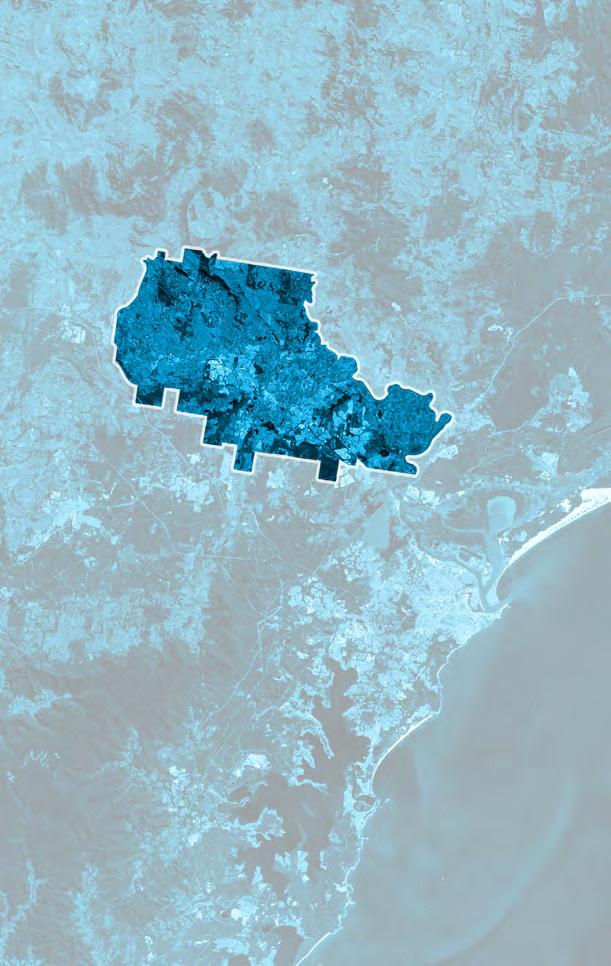
54,800 additional residents
Maitland is home to approximately 90,230 residents (ABS 2021). The population has increased from 56,060 residents in 2001 to 89,750 residents in 2021, an increase of 33,690 residents or 60% increase. This represents an annual average growth rate of 3% between 2001 and 2021.
The Department of Planning (2022) estimates that the population of Maitland is projected to grow by an additional 54,800 residents between 2021 (89,750) and 2041 (144,550). This represents a forecast population growth of 61% in the city over the 20-year period. This growth is anticipated to be driven by natural increase (26%) and migration into the city (74%).
Historic and projected population, household and dwelling change
Households Dwellings
Year 2001 2006 2011
56,060 63,510
19,200 21,800
20,650 23,900
Maitland is growing and will continue to grow. This growth needs to be planned and managed to meet the housing and employment, services and infrastructure needs of our residents and to improve the efficiency of how our city functions. If not planned for, growth can lead to pressure on existing housing, services and the environment, resulting in increased congestion, pollution and adverse consequences on housing affordability and liveability.
majority of Maitland’s growth is expected to occur in the existing urban release areas including Anambah, Lochinvar, Thornton North, Gillieston Heights, Farley, Aberglasslyn, and planned investigation areas throughout the city. The ability to reach the forecast long-term population growth will depend on infrastructure and housing supply being adequately planned early in the process,
2031 2036 2041
130,420 144,550
51,750 57,810
55,330 61,870
Forecast
opportunities for densification and infill development in suitable locations throughout Maitland are realised.
car travel becomes more expensive and congestion remains a challenge, residents need new transport options. As long as it is easier to move around in a car more than walking, cycling or public transport, residents who can afford to drive will do so. Providing opportunities for getting to destinations without having to drive can help residents save time and money, while opening up valuable street space for safer, more sustainable transportation options for all.
is acknowledged that COVID-19 pandemic has impacted on population growth, migration trend, housing demand and it is important to continuously monitor these factors.
Maitland has a younger population. The median age of residents in Maitland is 36 years compared to the Australian average of 38 years.
In terms of age distribution, the most prevalent age group is 0–14 years accounting for 22% of residents followed by 15-29 and 30-44 year age groups each accounting approximately 20% of the population. The 60-74 year age group accounts for 15% of residents with the least number of residents being those aged 75+ years currently living in Maitland (ABS 2021).
The number of residents aged 65 and over is estimated to increase from 13,500 in 2021 to 28,300 by 2041 (additional 14,800/110% of change). The working age population (typically defined as aged 15-64) is estimated to increase by 57,000 in 2021 to 88,500 in 2041 (a change of 31,500 or 55% of change). The number of children aged 14 and under is estimated to grow by 8,500 children from 19,300 in 2021 to 27,800 in 2041 (DPE 2022).
The age profile of the city is changing. One third of our population is aged over 50 years and this will continue to grow. The ageing population requires different dwelling types to younger families and will demand suitable housing options including smaller dwellings, senior living and aged care places close to public transport, services, health facilities and other amenities.
Maitland will still continue to see growth in the age group 30-years and under, and is forecast to be the dominant age group in 2041. This emphasises the need to continue to provide housing, services and employment opportunities for young people and young families in the city.
Housing needs to be planned in a way that meets varied and changing needs of people across their life, in areas where residents can access public transport, public open space and services, such as established towns and neighbourhoods.
provision of a diverse range of housing in Maitland will assist in providing housing choice to meet the needs of residents at different stages of life and allow our ageing residents to remain in the same community when their life circumstance change over time.
In 2021, Maitland had 34,370 households and is expected to increase by an additional 23,440 households to a total of 57,810 households by 2041 (DPE 2022). The average household size in Maitland was 2.7 people per household in 2021 and this is expected to drop to 2.5 by 2041.
Household structure in the city is dominated by couples with children accounting for almost 33% of households. Couples with no children are the next highest household group at 27% followed by one parent families 12%. Lone person household at 22% and group households at 3% account for the fewest households in Maitland. Three quarters of all households in the city contain families whilst 22% of households are considered lone persons (DPE 2022).
While all household types are expected to grow proportionately, ‘lone person’ and ‘couple only’ households are projected to be the two fastest growing household types in Maitland, with an expected increase of 13,500 households by 2041.
Changing household structure, shrinking household sizes and increasingly smaller households (i.e. lone person and couples) emphasise the need for a greater mix of housing types within the city to meet the needs of smaller and more diverse households. New developments will need to cater for this by providing housing types that suit smaller households, such as townhouses, terraces and apartments in appropriate locations.
Household by Type 2021 2041 Change
Family with children
Couple only
person
25,200 additional dwellings
Average 1,260 dwellings per year
Population forecasts indicate an increase of 54,800 residents by 2041 (DPE 2022). This translates to approximately 25,200 additional dwellings. The majority of existing dwellings within Maitland are separate houses accounting for 87% of all dwellings in 2021. Medium density dwellings account for 10% of stock and flats/apartments make up only 2% of housing stock (ABS 2021).
In terms of dwelling tenure, a total of 28% of all dwellings are owned outright, 39% are owned with a mortgage and 30% are rented (ABS 2021). More specifically by dwelling type, 31% of dwelling houses are owned outright compared with only 19% townhouses and 6% apartments. A total of 44% of dwelling houses in the city are owned with a mortgage, compared with only 11% of townhouses and 5% of apartments. The higher proportion of dwellings houses owned with a mortgage is reflective of Maitland’s relatively newer suburbs in greenfield release areas (ABS 2016).
The average number of bedrooms per dwelling is 3.4. Close to 85% of dwellings feature three or more bedrooms and 14% featuring two or less bedrooms. This indicates limited housing choice for lone persons, couples, single parents, and downsizers throughout the city as dwellings with a higher number of bedrooms are typically more suited to family households.
Less than 14% of all dwellings in Maitland accommodate one or two bedrooms which is not considered to align with the proportion of lone and two person households which account for over 49% of all households in the city. This also indicates that a considerable number of dwellings in Maitland have surplus or unused bedrooms.
Although, dwelling houses and vacant land remains in high demand and newly released medium density stock has typically been well received in recent years as median dwelling prices and approvals have increased. It appears that there is future opportunity to provide additional infill housing in Maitland.
The lack of housing diversity creates challenges in meeting the demand for the type of housing required for our future and current residents.
Housing needs to be considered for both quantitative and qualitative outcomes: not just overall supply, but how that housing can contribute to create sustainable, resilient and vibrant places to live. Decisions about where and how to accommodate new housing influences people’s lifestyles, the natural environment, carbon emissions, public infrastructure costs, public health costs and outcomes, social equity and economic competitiveness.
More sustainable urban forms encourage efficient use of land and a greater diversity of housing to match how people live. This reduces the need for significant and costly new infrastructure while responding to market changes and local conditions.
Our centres provide an opportunity to increase density in places with good access to public transport, services and amenities, including Central Maitland and East Maitland. Increased densities will contribute to the revitalisation of centres and increased liveability for our existing communities.
To support more local everyday services close to home, there may also be a need for greater densities in the growing suburban areas of Maitland. These densities can be met through a diversity of housing types, including attached dwellings, dual occupancies and multi-dwelling housing, organised and clustered to support walking, cycling and public transport in 15-minute neighbourhoods.
Housing demand is influenced by factors including taxes, interest rates, immigration, changing demographic profiles of a population, household growth, infrastructure availability, local and regional amenity, and employment opportunities. COVID has also had a notable impact on where and how people are preferencing to live. All of these factors have a direct impact on the housing diversity, affordability and delivery.
The NSW Government’s dwelling projection indicates that number of dwellings in Maitland is anticipated to increase from 36,680 in 2021 to 61,870 in 2041. This represents an additional 25,200 dwellings in total or an average of 1,260 dwellings per year.
Median weekly rental prices in Maitland have increased in the past four years across different dwelling types. Median rental prices for separate houses increased from $400 per week in 2017 to $490 per week in 2021. Compared to neighbouring areas and NSW, rent in Maitland (for all dwelling types) is relatively more affordable, with a $460 median weekly rent in December 2021, compared to $490 for both Newcastle and Lake Macquarie, and $495 for the NSW Average (DCJ 2022).
Different types of housing attract different rental costs. For example, a flat/unit in Maitland typically rents for $350 per week and a townhouse for $450 per week. The size of the housing product is also important with a 4 or more bedroom house renting for approximately $550 per week while a 2 bedroom house is $400 per week. Similarly, a 1 bedroom unit costs approximately $260 per week to rent while a 2 bedroom units costs $360 per week (DCJ 2022).
The median sales price for a separate dwelling in Maitland is $687,000 (December 2021), making the city a relatively affordable location compared to other neighbouring areas. For example, Maitland’s median sales price is below the median price for Newcastle ($860,000), Lake Macquarie ($849,000) and Port Stephens ($849,000) (DCJ 2022).
Further trends are evident in the Demographic and Local Housing Market Analysis undertaken for Maitland as follows:
• Median house price in Maitland has consistently increased over the past 15 years from $290,000 in 2007 up to $585,000 in 2020. An average growth rate of approximately 4.8% per year has been demonstrated throughout this period including a notable increase of almost 14% between median house prices in 2020 and 2021.
• Median residential unit prices in Maitland have increased steadily over the past 15 years from $262,000 in 2007 up to $417,000 in 2021. An average growth rate of approximately 3% per year has been demonstrated throughout this period, with an average of 175 sales per year.
• Over the past 15 years, median land prices fluctuated between $162,000 in 2007 to a high of $247,000 in 2017 before reducing to the current median of $228,000 in 2021. Average annual growth over the period 2007 to 2021 has been 2.3% per year and an average land sale has been 572 per year.
• Over the last 5 years, median land sales have increased from an average of $235,000 in 2017 to $299,000 in 2021. Average annual growth over the 2017-2021 period has been 6.5% and the average land sales per annum has been 668 lots.
• The average land area of vacant allotments that have sold throughout the 15-year period has trended downwards with average sizes ranging from 810 square metres to 840 square metres between 2007 to 2009 whilst average sizes have ranged from 690 square meter to 730 square meter between 2019 to 2021. This gradual decline over time is potentially attributable to a range of factors including:
• Market related factors such as affordability where smaller allotments are more affordable resulting in demand for appropriately priced products
• Reduced availability of developable land
• Developers seeking to rationalise land sizes to yield an increased number of allotments (and saleable product)
• Planning changes facilitating smaller lot sizes
The volume of sales and recent growth in median dwelling house prices indicates a strongly performing residential market. The increase in sales volumes of dwelling houses over time is also attributable to growing supply given ongoing new land releases in the city.
Social housing refers to rental housing for people on low incomes with housing needs. It includes public, community and Aboriginal housing. The NSW Department of Communities and Justice (DCJ) is responsible for the resourcing of public housing in NSW.
There was a total of 1,705 public housing dwellings in Maitland as at June 2021. Public housing accounts for 4.6% of total housing stock in the city and a proportion above the rate for NSW at 3.7%.
As of June 2021, there were 668 applicants waiting on the social housing wait list in the Maitland allocation zone (NN03), with 49 of these listed as priority applicants who are unable to address their housing needs in the private rental market and have been assessed to be in urgent need of housing. The waiting time for a studio or onebedroom or two-bedroom or four-bedroom dwelling ranges between 5-10 years, whereas for three-bedroom dwelling, the waiting time is 10 years or more. This reflects that there is unmet demand for social housing within the city for all types of dwellings.
As of the 2021 Census,
• 7.5% (6,740) of Maitland’s residents were identified as Indigenous (i.e., Aboriginal and/ or Torres Strait Islander), and was significantly higher than the rate for the NSW (3.4%).
• 6.7% of the total population of Maitland needed assistance with core activities (NSW 5.8%). The number of persons requiring assistance increased 36% from 4,450 in 2016 to 6,050 in 2021.
• In 2016 Census, 121 persons were recorded as homeless, a minor increase from 2011 Census to 116 persons. In terms of the total population, the number of homeless persons has remained around 0.2% of total population of Maitland between 2011 and 2016. The share of homeless population was estimated for NSW at 0.5% in 2016.
Housing affordability is the relationship between a household’s expenditure on housing costs and their total income. On average, house prices in Maitland $687,000 (DCJ, December 2021) are typically 7.5 times the annual household incomes $91,832 per year/1,766 per week (ABS 2021).
Non- Strata homes (i.e. single detached dwellings) at December 2021 were $680,000 and Strata (i.e. units/townhouses) were $460,000 (DCJ, 2021). This is almost 7.5 times the annual household income for a house and only 5 times for a unit.
Housing is considered affordable when the cost of rent or paying the mortgage does not represent more than 30 per cent of the gross income of a very low to moderate income household. The terms ‘affordable housing’ is used to describe housing that is owned by NSW Government or a registered community housing provider and rented to a mix of very low to moderate income households.
Based on 2011 and 2016 Census, low-income households were identified as those with a median weekly income of less than $769 in 2011 and $934 in 2016. Accordingly, there were 2,843 rental properties (or 43.6% of total rentals) in Maitland considered affordable for low-income renters in 2011 this increased to 3,156 in 2016 (or 38.8% of the total rented housing). This indicates that although the number of affordable housing had increased the overall proportion of affordable housing is decreasing as a proportion of all new dwellings created.
Between 2011 and 2016 the weekly rent in Maitland has increased at an annual average rate of 2.2%, representing the lowest rate of rent increase in the Hunter Region. These findings were further supported by the Affordable Housing Income Gap report prepared for Compass Housing Services in 2018. The report determined that renting in Maitland during this period was considered relatively affordable, with around 28% of weekly income required to pay median rent for a three-bedroom house, and 21% for two-bedroom unit (30% is considered to be the affordability threshold).
There were 1,534 mortgaged dwellings in Maitland considered to be affordable for lowincome home purchasers in 2011 (16% of all mortgaged dwellings). This figure increased to 2,232 affordable mortgaged dwellings in 2016 accounting for 21% of all mortgaged dwellings.
LGA
Average wage per year
Non-Strata house price ((i.e. single detached dwellings)
Strata (i.e. units/ townhouses)
Maitland $91,832 $680,000 (7.5 times) $460,000 (5 times)
Lake Macquarie $84,396 $850,000 (10 times) $595,000 (7 times)
Port Stephens $71,344 $854,000 (12 times) $585,000 (8 times)
Newcastle $91,520 $885,000 (9.7 times) $666,000 (7.3 times)
More recently, the NSW Regional Housing Need Report 2021 released by Shelter NSW identifies Maitland as having one of the highest proportion of households with a mortgage stress in NSW. In addition, the report identifies the social housing stock in the city is close to an adequate level (4.6% of private dwellings), but there are 732 residents on the waiting list and it will take between 5 to 10 years for those people to access a property.
Population forecasts indicate an increase of 54,800 residents by 2041. This equates to approximately 25,200 additional dwellings or approximately 1,260 new dwellings per year.
It is estimated that there is potential for approximately 16,200 dwellings from existing greenfield release areas and planned investigations areas in the LGA. Based on the 10-year average for dwelling construction i.e. 850 dwellings per year, this would result in approximately 20 years supply of residential development. In addition, the Hunter Water residential connection data is regarded as a reliable source of historic dwelling completions. Between 2013 and 2021, an average of 880 new connections were recorded.
The current supply pipeline exceeds the Greater Newcastle Metropolitan Plan’s requirements to plan for a 15-year land supply timeframe. This timeframe could be extended further, if an increased share of total housing demand is met in established areas and increased densities can be achieved within the existing greenfield release area.
Based on the population forecast, there is likely to be sufficient demand for an average of 1,260 dwellings annually between now and 2041. This is higher than the historical number of construction certificates that have been issued in Maitland over the past 10 years.
The projected dwelling requirement is the minimum number of dwellings required to account for population projections. We plan for a contingency (i.e. additional dwellings) earlier in the planning process to account for the likely reduction in overall yield as sites are subject to more detailed assessment that refine the developable area.
The draft Hunter Regional Plan 2041 seeks to apply a neighbourhood focused approach to different housing densities and typologies. The draft Plan has proposed optimum dwelling density targets within different neighbourhood contexts that will be implemented through local strategic planning. In general suburban contexts, the draft Plan is seeking an optimum density of 30 dwellings per hectare to support more local access to everyday needs and reduce the reliance on car travel.
The above potential greenfield lot supply is based on a density of 10 dwellings per hectare in greenfield release area. If a share of future housing demand will be met by increased densities within the existing greenfield release areas, the estimated years of greenfield land supply will also be extended.
For the purposes of calculating number of years land supply remaining, it has been assumed that the current split 90% greenfield and 10% infill will continue at least for the short to medium term. If a share of future housing demand is supplemented with infill housing, the estimated years of greenfield land supply will also extend.
The supply of residential land within Maitland is outlined in table below.
Eastern Precinct
The population forecast indicates that there is likely to be demand for 25,200 additional dwellings by 2041. This requires an average of 1,260 additional dwellings to be provided in each year between 2021 and 2041. Table below shows the gap between housing supply and demand within Maitland.
Scenario 1: 10 dwellings/ha
Scenario 2: 15 dwellings/ha
DPE 2022 dwelling forecast 25,200 25,200
Remaining capacity of residential zoned land 14,000 21,000
Potential capacity of investigation areas 2,200 2,200
Infill housing + EMCA 2,000 2,000
Sub-total 18,200 25,200
Gap 7,000 No gap
Based on historical dwelling completion (i.e. 850 dwellings/year)
21-year supply 29-year supply
DPE 2022 dwelling forecast (i.e. 1,260 dwellings/year) 15-year supply 20-year supply
Recent residential growth has been characterised by the development of low-density detached dwellings in greenfield release areas, located in the outer edge of the city such as Thornton North, Aberglasslyn, Gillieston Heights, Farley, Lochinvar and Louth Park. Large, detached dwellings in greenfield release areas are attractive to families with children but are inefficient and expensive for smaller households.
Greenfield housing accounts for approximately 90% of total dwellings in Maitland. The continuation of low-density detached dwellings in greenfield release areas means there is limited housing diversity and choice, and leads to pressures for expansion of the urban footprint encroaching into our rural areas. This is an issue for residents ageing in place and small households or individuals looking for smaller and more affordable housing product in the market.
Demographic characteristics influences the types of housing that are needed for an area. The evidence suggests that there are several aspects of housing supply in the city that are not well matched with the housing needs of its current residents. Limited supply of smaller dwellings in the city means that some households will be forced to pay for a dwelling that is larger than they need, which will contribute to affordability issues. Approximately 48% of dwellings have two or more spare bedrooms. This suggests that households may be to paying for dwellings that are larger than they need or are unable to find suitable size dwellings to meet their needs.
Maitland remains a relatively affordable location to rent or purchase a house. Rental stress is the dominant form of housing stress in Maitland. With the majority of future housing development likely to be in the form of separate dwellings in greenfield release areas, it is critical to consider increasing the diversity of housing to meet changing dwelling preference and to maintain housing affordability and potentially reduce the housing stress.
Infill housing accounts approximately 10% of total dwellings in Maitland. The lower proportion of infill development is likely to be changed in the medium to long term in response to the demand for smaller dwellings with less land, and proximity to services and amenities. Infill development encourages a mix of housing types and attracts a wider variety of small households to an area such as downsizers, couples without children, single parent families and single person households.
The demand for infill development will be an outcome of market forces as townhouses, units, villas and duplexes are more affordable due to the reduced land and building costs, and a preference of shift towards smaller dwellings with less land to manage.


The urban footprint of Maitland has expanded extensively over the past few decades. Analysis of urban land since 1980, 2000, 2020 and 2040 has been undertaken to understand the extent of urban expansion and to visualize the physical urban structure of the city.
Figure 04 below illustrates the expansion of Maitland’s urban areas (urban footprint) over the time.

The urban footprint of Maitland has greatly expanded over the time, from a regional town occupying approximately 2,200 hectares in 1980 and, now it covers approximately 6,200 hectares and will continue to grow over the next 20 years as new urban release areas and planned growth areas are developed. Between 2000 to 2040 the urban footprint is expected to increase by approximately 4,500 hectares - more than doubling the size of the city. The ever-increasing urban footprint leads to a range of challenges in connectivity, service delivery and sustainability.
The continuity of low density scattered greenfield residential areas results in limited housing choice, less housing diversity and the continued rapid urban expansion of our urban footprint. This is a key issue for our increasing ageing population as well as smaller households in terms of housing choice and affordability in the long term.
Maitland is situated on the banks of the Hunter River among a network of tributaries and on an extensive floodplain. Parts of the city are prone to regular and significant flooding which has impacted in many ways upon the urban landscape and has shaped our urban boundaries. The implications of changing climate and the increased frequency and severity of storm events will continue to influence future growth options.
New residential development will be restricted in locations with an unmanageable risk of exposure to flooding and the floodplain will be protected as agricultural land and environmental conservation land for its continued contributions to the city’s character, amenity and liveability.
Figure 04: Maitland’s urban footprint between 1980 - 2040
Urban footprint by year
“Our urban structure is growing faster and it has increased 2.5 times over the last 20 years. The urban sprawl is partially driven by lower land values around the urban periphery, but it means that urban residents need to travel longer distances, at greater personal and environmental expense. It also has numerous other social, economic and environmental repercussions, from lower productivity to rising greenhouse gas emissions and encroachment on fertile agricultural land.”

sustainable
cities
HWY
The Department of Planning and Environment’s Standard Instrument Local Environmental Plan sets out five standard residential zones that councils may use within their Local Environmental Plans:

R1 General Residential
R2 Low Density Residential
R3 Medium Density Residential
R4 High Density Residential
R5 Large Lot Residential
The Maitland LEP 2011 adopts two out of the possible five residential zones of the Standard Instrument. i.e. R1 General Residential Zone and R5 Large Lot Residential Zone and land use tables of these zones are referred to as being "open".
In addition, B2 Local Centre, B4 Mixed Use and C4 Environmental Living zones also allow some form of residential development.
Maitland has a total of 4,400 hectares of residential zoned land, and it represents approximately 12% of total land in the city.
R1 General Residential zone provides for a broad variety of residential densities and housing types, including dwelling houses, dual occupancies (attached, detached), multi-dwelling housing (terraces, town houses and villas), residential flat buildings, boarding houses and seniors housing.
Under the Maitland LEP 2011, minimum lot size in R1 General Residential zone is 450m². However, there is provision under Clause 4.1A of LEP for the minimum lot size to be reduced to 300m² where both the subdivision and dwelling application (can include a separate, attached or semidetached dwellings) is considered as part of one application. In addition, site coverage and building height controls in Maitland DCP 2011 are used to influence the density and built form outcomes within this zone.
This zone also includes additional uses that provide facilities or services to residents, including neighbourhood shops, community facilities, and childcare centres. If a particular type and consistent density of residential development is desired it is better to use a more tailored residential zone such as the R2 Low Density Residential, R3 Medium Density Residential or the R4 High Density Residential zones.
This zone is intended to cater for development that provides for residential housing in a rural setting, often adjacent to towns or metropolitan areas. Access to reticulated sewerage and water systems should be considered when determining appropriate minimum lot sizes. Lot sizes can be varied within the zone depending on the servicing availability and other factors such as topography, native vegetation characteristics and surrounding agricultural land uses.
This zone is generally intended for land with special environmental or scenic values and accommodates low impact residential development. This zone may be applicable to areas with existing residential development in a rural setting, which still has some special conservation values.
This zone is generally used where a wide range of land uses are to be encouraged, including commercial, residential, tourist and visitor and community uses. The residential development component in this zone can form an important element in revitalising and sustaining the area and increasing housing diversity close to centres and major transport hubs.
This zone is generally intended for centres that provide a range of commercial, civic, cultural and residential uses that typically service a wider catchment than a neighbourhood centre. This zone provides for residential accommodation in the form of shop top housing. Such a mix of uses will increase walking, cycling and public transport options for more people by making more activities available in one location such as local and town centres.
R2 zone is intended to be applied to land where primarily low-density housing is to be established or maintained. This zone provides longer term assurance to well established areas where matters such as heritage and character are particularly important. Typically, the zone features detached dwelling houses, but it may be appropriate to include dual occupancy (attached or detached) or some multi-dwelling housing. This is the lowest density urban residential zone and the most restrictive in terms of other permitted uses considered suitable. These are generally restricted to facilities or services that meet the day-to-day needs of residents.
R3 zone is for land where a variety of medium density housing is to be established or maintained. The R3 zone facilitates more substantial increase in residential densities, typically in areas that currently or are planned to have a range of services, employment and community facilities available nearby. Other residential uses (including typically higher or lower density uses) can also be permitted in the zone where appropriate. A variety of residential uses have been mandated to encourage housing choice and diversity in this zone.
In the R4 High Density Residential zone, residential flats are appropriate and encouraged to create a more dense urban form than the other residential zones. It allows other housing options such as multiple dwelling houses and uses compatible with the residential neighbourhood, including childcare centres, neighbourhood shops and places of public worship. The R4 zone is generally applied to land surrounding centres where residents can readily access services and public transport.
Hostels
dwelling or part of
building
Multi dwelling housing
more dwellings,
Residential flat buildings
building containing 3
multi dwelling housing.
more
Rural workers’ dwellings
building additional to a dwelling house
as a place of residence
Secondary dwellings
self-contained dwelling that
same
Semi-detached dwellings
dwelling
is on
own
building used permanently
Shop top housing
or more dwellings
lot
The Greater Newcastle Metropolitan Plan aims for a more sustainable and consolidated model of urban growth and sets a target for 40% greenfield and 60% infill housing target across the Greater Newcastle by 2036. The Draft Hunter Regional Plan 2041 proposes to increase infill proportion to 80% by 2041. Infill housing will play a key role in facilitating future urban growth in Greater Newcastle and will assist to diversify the housing stock and integrate housing with established centres, employment clusters or transport nodes and maximise access to existing infrastructure and services.
The historical approval data suggests that Maitland is currently supplying approximately 90% of housing in greenfield release areas and 10% infill housing within established urban areas. There has been limited infill housing in recent years, however this trend is expected to change in the medium to long term in response to changing demographics and market demands.
There are many public benefits to making a change sooner rather than later. The combination of low density, separated land uses and car-prioritising infrastructure decisions has consequences in terms of household costs, equity and choice. If we reduce car dependency and vehicle ownership, we can reduce congestion, public health and infrastructure costs; reduce greenhouse gas emissions and air pollutants; improve the environment; and increase personal health and social equity.
Higher density
Active & public transport infrastructure
Maitland has been built on the banks of the Hunter River and has a long history of destructive flood events which has influenced our urban growth boundaries. Urban growth needs to be balanced against the natural constraints such as flooding and bushfire, and agricultural and environmental values of the rural land.
Protection and management of land on the urban rural interface is required to enable residents and visitors to continue to enjoy its scenic, cultural, and environmental values for years to come. This approach will support a more sustainable urban form and will lead the city to be a more resilient, productive and liveable place.
A city wide, high-level land use opportunities and constraints analysis was undertaken to identify future urban growth options. This analysis included a land capability, suitability and multi-criteria analysis for infill and greenfield housing development.
Land capability analysis classifies areas within the city as ‘no-go’ zone or as having hard constraints for development (Figure 04), using a range of criteria including areas with high ecological value, flooding, bushfire, mine subsidence, slope, waterways etc.
Multi-criteria analysis is a powerful spatial decision-making technique to determine land suitability, risk or susceptibility and allow overlaying of a range of criteria. Two separate multi-criteria analyses were undertaken to identify potential areas for future investigation to greenfield (Figure 05) and infill (Figure 06).
The findings of this greenfield multi-criteria analysis outlines that there are limited greenfield development opportunities, beyond the existing urban zoned land and planned investigation areas for long-term growth of the city. Opportunities for greenfield housing is becoming increasingly constrained due to land capability as well as infrastructure constraints.
Car prioritising infrastructure Low density Seperated land uses Mixed use
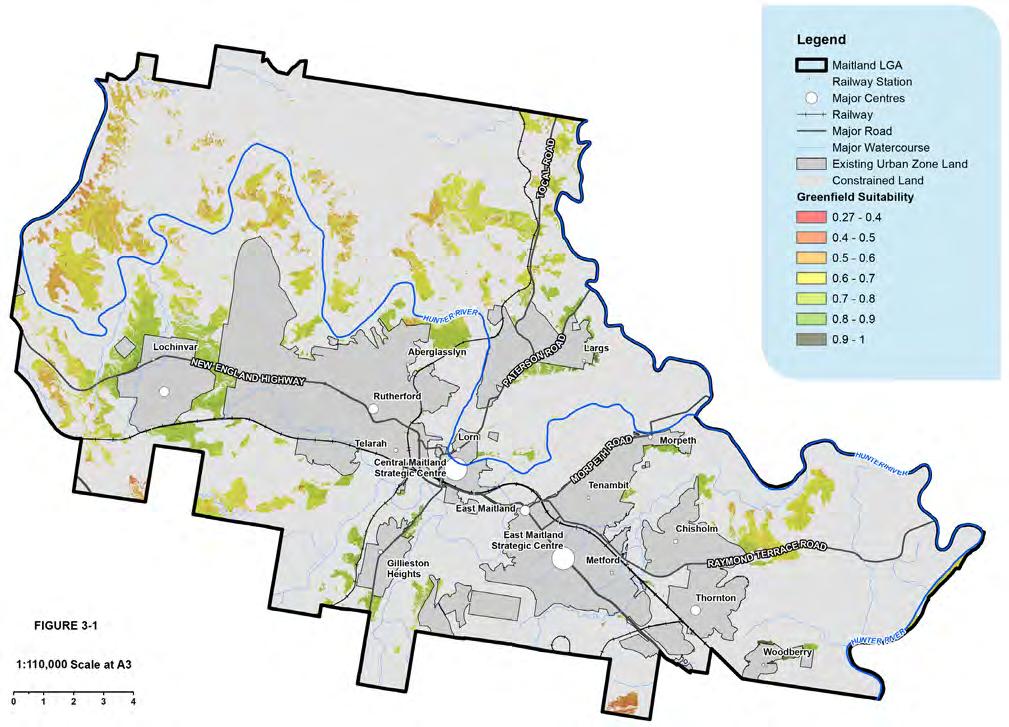
Infill multi criteria analysis identifies key localities for potential infill investigation within the established urban areas.
Infill multi criteria analysis identifies key localities for potential infill investigation within established urban areas.
The analysis outlines that there are significant opportunities within existing urban areas for infill development in particular around established centres and railway stations including Central Maitland, East Maitland, Rutherford, Telarah, Metford, Thornton, Woodberry. These areas are a significant opportunity to improve housing diversity and facilitate infill housing.

The analysis outlines that there are significant opportunities within the existing urban areas for infill development in particular around established centres and railway stations including Central Maitland, East Maitland, Rutherford, Telarah, Metford, Thornton, Woodberry to improve housing diversity and facilitate infill housing.
Permitting medium density housing particularly multi dwellings, apartments, shop-top housing in more neighbourhoods can encourage development that brings population to support the local services and opportunities for greater active and public transport.
Permitting medium density housing in appropriate locations particularly multi dwellings, apartments, shop-top housing in or adjacent to town centres can encourage development that brings population to support the retail functions of the centre.
This will influence housing choice and affordability, focus new housing in areas close to public transport, jobs and open spaces. This approach will also assist in limiting urban sprawl and protecting our valuable rural land, and improve housing choice and affordability to support to meet the needs of an ageing and changing population.
This will influence housing choice and affordability, focus new housing in areas close to public transport, jobs and open spaces and will reduce urban sprawl and protect our valuable rural land, and will improve housing choice and affordability to support to meet the needs of an ageing and changing population.
The Greater Newcastle Metropolitan Plan sets a target of 25% small lot and multi-dwelling housing by 2036. The Plan also recommends urban densities of between 50 to 75 residents per hectare for the catalyst areas such as East Maitland Catalyst Area. The plan requires local councils to comprehensively consider all residential release areas and urban renewal opportunities prior to identifying new release areas.
Transitioning to more infill development has many advantages and challenges. . Therefore, it needs to be guided in different neighbourhood contexts and in a timely manner. The table below summarises the various advantages and challenges related to infill housing
• Support compact and sustainable urban form.
• More destinations within walking and cycling distance of homes, reducing car reliance.
• Small scale infill is more likely to be designed to suit site conditions and less likely to have a cookie cutter approach.
• Encourage the use of the public domain for longer and makes areas feel more vibrant and safer.
• Renewal and revitalization of town centres with increased population.
• Improve diversity of housing stock within established ban areas by providing a variety of housing choices for residents to suit their changing needs and preferences.
• Allow residents to remain in the same community when their life circumstance change over time.
• Improved walkability will increase incidental exercise which improves physical and mental health.
• Foster a sense of community through more opportunities for social interactions in neighbourhoods and centres.
• Renovations and re-purpose of existing housing stock has significant benefits in terms of sustainability.
• Reduce development pressure on outlying areas from urban sprawl and protecting rural and environmental land.
• Less vehicle emissions as shops and services are nearby.
• Smaller building footprints with energy and water efficiencies.
• Increased densities will improve the feasibility of a wide range of retail, commercial and residential outcomes.
• Increased use of local amenities and facilities by more residents will reduce the cost per user.
• More efficient use of land with greater accessibility for public transport, employment, open space and services.
• Provide critical mass for businesses and services to sustain in long term.
• Takes the advantages of existing infrastructure with some upgrades where new release areas have higher infrastructure cost to connect to utilities and roads.
• Make public transport more viable, in turn reduces car dependency and improves walkability.
• Reduce costs for building and maintaining hard infrastructure (roads, sewer, water, electricity, telecommunication) as well as soft infrastructure (community spaces, parks).
• Management of impact on heritage, neighbourhood and local character.
• Potential impacts on existing road network.
• Careful consideration and planning for new open space, community facilities or schools.
• Potential to exacerbate issues such as flooding and urban heat island effect.
• Limitations to increase urban canopy.
• R1 General Residential zone is not considered to provide appropriate direction for future infill housing and there is likely to be uncertainty within the market as to specific site potential and highest and best use.
• Additional pressure on existing infrastructure assets.
• Existing road networks, types and widths are difficult to change and may not be easily adaptable to higher densities.

By 2041, population forecasts indicate that an additional 25,200 dwellings will be necessary within Maitland to accommodate forecast population growth. This forecast demand will be met by a combination of:
• Development of our existing zoned greenfield urban release areas to deliver a greater mix of housing types.
• Progressive development of planned and future investigation areas identified in the LSPS and this Strategy.
• Facilitating higher density infill development in different neighbourhood contexts.
• Supporting dispersed, small scale infill development within existing urban areas, where appropriate.
Infill housing refers to the redevelopment of existing urban areas for additional housing such as dual occupancies, terraces, townhouses, secondary dwellings, multi dwellings and apartments. As outlined in the Greater Newcastle Metropolitan Plan and Hunter Regional Plan, greater housing density and diversity will play a key role in facilitating our future urban growth to support a more sustainable urban form for our city.
In 2021, Council commissioned Tract Consulting and Charter Keck Cramer to investigate potential infill housing opportunities within the city and to identify any barriers to achieving appropriate infill outcomes. The study focused on seven (7) areas identified in the infill multi criteria analysis
The study:
• identified the typical configuration of sites suitable for infill housing within the nominated areas (e.g. the typical size, setback, length and depth of an allotment);
• determined appropriate housing typologies for each nominated area based on allotment constraints, local demographics, and market conditions;
• tested two (2) hypothetical development scenarios for each nominated area. The first to determine what development could be achieved under our current planning controls (base case scenario). The second to examine the development uplift achievable through possible changes in our planning controls (alternative uplift scenario);
• examined the financial feasibility of these scenarios in the current market conditions to confirm viability. The selected development scenarios examined a range of small-scale residential infill development products including:
• dual occupancy dwellings (attached and detached)
• multi-dwellings (terraces or townhouses)
• manor houses
• residential flat buildings (up to 4-storeys)
The development scenarios tested for each nominated area are outlined in the table below.
Nominated Area Base scheme (in line with the current planning controls)
Central Maitland Dual occupancy – attached
East Maitland Dual occupancy – detached
Manor house (4 units)
East Maitland Catalyst Area Multi-dwelling (3 terraces)
Rutherford Semi-detached dwellings
Alternative scheme (uplift schemes considering planning amendments)
Residential Flat Building (4 units)
Residential Flat Building (7 units)
Residential Flat Building (7 units)
Manor house (4 units)
Residential Flat Building (4 units)
Telarah Dual occupancy – detached Manor house (4 units)
Thornton Multi-dwelling (3 terraces)
Manor house (3 units)
Woodberry Dual occupancy – attached Manor house (3 units)
The study found that small scale infill developments are becomin g increasingly viable across the city in the current market conditions. The study indicated that the City is seeing an emergence of dual occupancies, multi-dwelling terraces, townhouses and resid ential flat buildings currently being developed in our suburbs.
The study revealed that higher density development represents a longer-term proposition for some infill locations in Maitland. It will be important to make allow ances for such typologies within our local planning framework to enable them in suitable locations.
As greenfield land supply in Maitland is exhausted, the requirem ent and demand for more infill development will continue to increase. Specific infill locations where there is sound opportunity for increased density exist in well serviced areas include such as those:
• close to existing train stations
• in areas close to existing centres
• along traditional high streets, and
• near major employment areas such as the New Maitland Hospital, TAFE and Greenhills shopping centre etc.
The study provides recommendations for Council to continue to support opportunities for increased densities within the city. These recommendations include:
• Introducing a R3 Medium Density Residential zone for centre-based infill and catalyst areas to reflect areas considered suitable for higher densities.
• Reviewing and update planning controls to reduce barriers to development such as:
- offering bonus provisions to incentivise appropriate infill housing in the right location.
- incentivise site amalgamation to allow for better design outcomes and more efficient use of land and introduce minimum lot sizes for multi dwellings and residential flat buildings.
- exploring the potential for increased height limits and FSR, or reduced parking rates where there are barriers to achieving appropriate development outcomes particularly near train stations.
• Enhancing the public domain in suitable infill locations to promote development and attract people to these areas.
• Developing an integrated approach to parking in centre-based infill development to reduce the need for parking requirements where appropriate to do so.
• Introducing a more streamlined approval process for infill development types.
The above measures will support the delivery of medium density residential outcomes by improving confidence and certainty, and by providing flexibility in our planning frameworks to reduce barriers in areas suitable for more infill development.


The Maitland Local Housing Strategy provides an opportunity to look beyond 2041 and develop a much more sophisticated local planning framework to guide and manage future residential growth within the city.
The Strategy recognises and responds to evidence about what types of housing will be needed for our growing and changing population, where it can be best located and how Council will deliver better housing outcomes, together with its community, developers, government agencies, service providers and other stakeholders.
The Strategy builds on seven (7) interconnected planning principles. These principles will serve as a foundation for future planning and decision making to achieve better housing outcomes across the city.
The following planning principles will:
• Inform changes to polices, plans and strategies at the regional, metropolitan and local levels
• Support various planning initiatives at all levels of government
• Assist with determination of suitable locations for certain land uses permitted in residential land
• Inform and provide justification for planning proposal
• Assist with advocating for changes to residential land use planning and development
This 15-year timeframe could be extended as an increased share of total housing demand is met by increasing densities within the existing greenfield release areas and planned investigation areas. The supply will also be supported in established areas through centre-based infill housing opportunities and the East Maitland Catalyst Area.
Future housing supply in Maitland is guided by the Hunter Regional Plan, the Greater Newcastle Metropolitan Plan and the Maitland Local Strategic Planning Statement. Delivering the existing urban release areas and investigate infill development opportunities in urban areas have been identified in the Hunter Regional Plan as key priorities for future housing in Maitland.
The Plan states the following in relation to housing in Maitland:
“Strong population growth in Maitland is resulting in ongoing pressures for additional residential land and a shortfall in infrastructure provision. There are significant challenges to servicing a number of development fronts and increasing dwelling density near centres, transport nodes and in areas of high amenity. The growth in housing needs to be balanced against the natural constraints of flooding and the agricultural value of the floodplain and other rural lands.”
The Greater Newcastle Metropolitan Plan estimates that Maitland will deliver a significant proportion of greenfield housing target for the metropolitan area and it also requires local council to consider all existing residential release areas and urban renewal opportunities prior to identifying new release areas. In addition, the draft Hunter Regional Plan acknowledges for a growing Maitland, uncoordinated provision of services and infrastructure is not sustainable, efficient, cost effective nor equitable. It seeks to understand supply through the various stages from strategic planning to housing construction.
The evidence suggests that the city has a healthy supply of residential greenfield land to accommodate forecast growth over next 15-year period. Some land is already zoned for residential, and some is currently under investigations to determine best land use planning outcomes.
The remaining greenfield land supply has been calculated based on 10 dwellings per hectare. However, the draft Hunter Regional Plan seeks to provide dwelling density of 30 dwellings per hectare in general suburban neighbourhoods, with increasing densities in more urban neighbourhoods.
The City’s current supply pipeline meets the NSW Government’s requirements to plan for a 15-year land supply. Therefore, there is no immediate need to identify additional future investigation areas for greenfield housing as a part of this Strategy. Council will be working with the NSW Government through the Urban Development Program Committee to ensure ongoing land supply.
There is limited potential for future residential greenfield land beyond the areas identified in the existing strategies due to significant land use, infrastructure, and environmental constraints. Council has identified the need to balance greenfield and infill housing to sustain its growth beyond 2041 to deliver better housing for our growing and changing population. It allows us to protect our rural amenities and landscape, local character, environment and to discourage urban sprawl.
Increasing the supply of housing is not simply a matter of releasing more land and building more houses. Housing stock must also be suited to the needs of our residents, including their changing lifestyle and preferences. A mix of housing types will allow Maitland to remain an attractive place to live and raise a family for years to come.
Large lot residential housing forms an integral part of our housing mix. R5 Large Lot Residential zoned land is scattered throughout the city along the periurban fringe adjoining existing residential areas. It acts as a transitional area where the land is unlikely to be developed for more intensive urban purpose due to its environmental constraints and it serves as a buffer between agricultural and residential zoned land.
Increased growth has seen demand for large lot residential development. However, the provision of large lot residential land has been an ongoing issue for Maitland as this typology in some instances better reflects more of an urban land use.
the right type of housing in the right locations to suit our growing and changing population
Large lot residential development can often be seen as an inefficient form of housing as it has a very low density, that still requires infrastructure including roads, and in some cases reticulated water and sewer services. The provision and operational costs of new infrastructure is inefficient where in areas with low numbers of dwellings. These areas need to be being serviced as other, more intense areas, and result in increased environmental impacts from the construction and maintenance of infrastructure required to service the lots. If not planned well, large lot residential development has the potential to conflict with valuable agricultural or environmental land.
Maitland covers a relatively small geographical areas compared to adjoining local government areas. It is vital that large residential lots do not hinder the proper and orderly development of urban areas. In the future, Council should consider whether development of this type should occur at the expense of our rural land and natural environment.
From rural land perspectives, the Draft Rural Lands Strategy 2041 identifies a range of issues related to R5 Large Lot Residential development including land use conflict, infrastructure provision, cumulative loss of high value agricultural and environmental land, cumulative impacts of flooding, flood free access, loss of flood refuge for livestock and machineries.
Over the past 10 years, an average 27 R5 Large Lot Residential lots were approved per year within the city. The evidence identifies that there is capacity for approximately 457 lots within the existing R5 Large Lot Residential zoned land and planned investigation areas. This meets the demand for approximately 16 years at the current rate. Once remaining supply is exhausted, alternatives to R5 Large Lot Residential should be explored.
At the fringes of the existing and planned urban release areas, R5 Large Lot Residential zone allows a better transition between urban land use and riparian areas, agricultural land, vegetated landscapes and also support functional use of rural zoned land.
Future planning for large lot residential development should allow for integration with adjoining residential development that requires less area per lot while yielding above average sized residential allotments. These locations will provide all essential services and reduce the areas that would otherwise be required for on-site services.
The alignment of Maitland’s Rural Lands Strategy and Local Housing Strategy will allow Council to coordinate housing growth in appropriate locations to meet the need of growing and changing communities and ensure our future growth can be achieved without losing the liveability, amenity or housing affordability that current residents enjoy and appreciate.

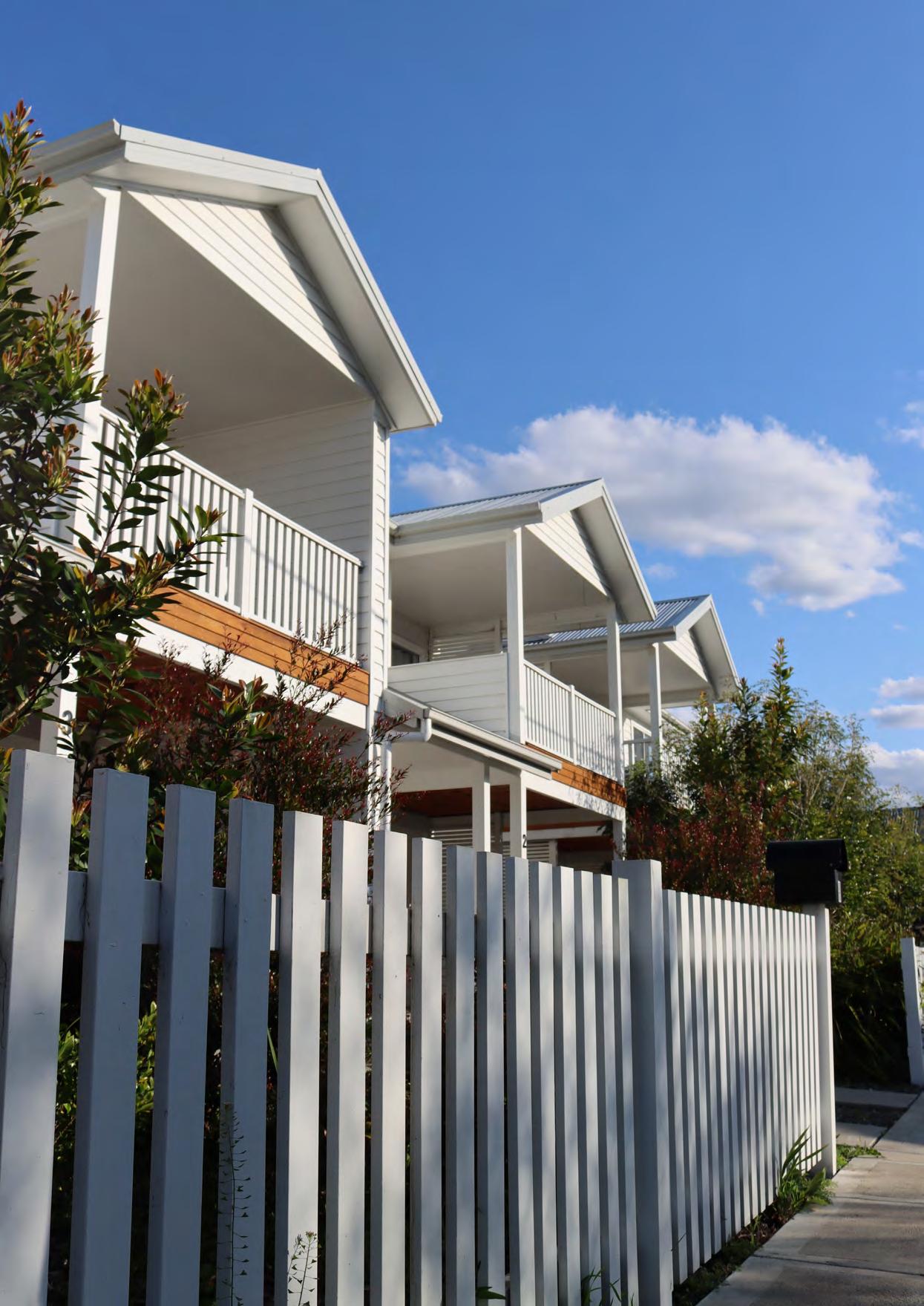
The evidence suggests that the existing greenfield release areas and planned investigation area have adequate development capacity to meet the forecast housing demand beyond 2035. Centre-based infill and catalyst area planning within established areas also has the ability to provide new and different forms of housing stock.
At this point of time, there is no immediate need to identify additional land for greenfield residential investigation. However, Council will continue to support the planned and future investigation areas identified in this Strategy to proceed through rezoning process in a timely manner.
It is likely Maitland will continue to grow and may need additional greenfield land beyond 2041. Some areas identified in the greenfield multi criteria analysis, adjacent to the existing urban release areas may have a long-term growth potential beyond 2041. However, areas north of the Hunter River are not supported for future investigations due to significant flood risk, limited connectivity and infrastructure constraints.
Identification of a site on the greenfield multi criteria analysis map does not indicate strategic merit for future development. Council will not support any premature investigations or proposals for rezoning or designating land for future residential use, beyond those already identified in this Strategy, unless:
• The subject land/proposal is identified in the regional or district plan as growth corridor; or
• The proposal has demonstrated in-principle support from the relevant state agencies and,
• The proposal meets the aims and objectives of Council’s adopted policies, and,
• The proposal has demonstrated suitable funding mechanisms for infrastructure provision and,
• The proposal has taken into consideration the long-term financial implications for Council to service the area.
• Continue investigations into land identified for future greenfield housing.
• Monitor and review land supply and dwelling production on an annual basis.
• Limit R5 Large Lot Residential development to existing R5 Large Lot Residential zoned and planned investigation areas.
• Encourage R5 Large Lot Residential in specific locations within the existing and planned release areas to allow better transition between urban land use and riparian areas, agricultural land and vegetated landscapes.
• Investigate opportunities to streamline the rezoning process where strong alignment with the local planning framework can be demonstrated.
• Prevent greenfield residential growth to areas north of the Hunter River due to the flood risk and limited connectivity.
• Respond to key recommendations outlined in the Infill Housing Study to enable infill housing in appropriate locations.
• Review and amend the DCP to address any barriers to infill development including parking, height controls, landscaping, setback etc.
• Investigate development incentives to facilitate lot amalgamation (i.e. height and density bonus) in identified areas.
• Continue to support scattered, small scale infill development in R1 General Residential zone such as dual occupancies and secondary dwellings, outside the areas identified for densification.
Housing diversity refers to a range of housing types available in an area to meet the needs of residents at different stages of their life. The provision of a diverse range of dwelling types, sizes and tenures can provide housing choice and address the housing needs of residents at different stages of their life and allow them to remain in the same community when their life circumstances change.
Like many regional cities, Maitland’s housing stock is dominated by single detached dwellings. Approximately 87% of total dwellings and an average 3.4 bedroom per dwelling. Currently, 49% of our total households are small (i.e. lone and couple only household), but only 14% of all dwellings in Maitland accommodate one or two bedrooms. This highlights a mismatch in the demand for and supply of smaller dwellings in Maitland.
Our residential lands are predominantly zoned as R1 General Residential under the Maitland LEP 2011. This zone permits a variety of housing types and densities. Despite the wide range of permissible residential housing types and densities, there has been limited take up across the city for denser development such as residential flat buildings and multi dwelling houses.
The demographic profile of the city is forecast to change significantly over the next 20 years, reflecting ageing in place and the lifestyle choice of our residents. This means the single detached dwellings with three or four bedroom that traditionally dominate our suburbs may not meet everyone’s needs and will create a demand for a greater mix of smaller dwellings to suit their changing needs.
Most of our growth is expected to occur in greenfield release areas in coming years including Thornton North, Lochinvar, Farley, Gillieston Heights, Aberglasslyn and Anambah. Our urban release areas are delivering predominately a homogenous housing product in the form of single detached dwelling on individual Torrens Title allotments. Detached dwellings in greenfield release areas are typically well suited for families with children.
Increasing housing choice means our residents will have access to the right type of dwelling when they need it. The provision of appropriate housing options to the younger population is key to attract and retain a wider population base to the city to sustain its population growth beyond 2041. The need for ageing in place and encouraging different age groups in suburbs which supports stronger communities, hence the need for greater housing diversity and choices.
Over the last 10 years, the share of infill housing has been approximately 10% of all new dwellings. The evidence indicates that there is ongoing diversification of Maitland’s housing stock in recent years. There has been some uptake of small lots either attached or detached dual occupancies in existing greenfield release areas.
The provision of a diverse housing stock will assist in achieving housing choice and affordability outcomes to meet the needs of our future and current residents. In this context, increasing housing diversity will be a key element of addressing housing needs into the future and it needs to be encouraged in both established urban areas and greenfield release areas within the city.
The draft Hunter Regional Plan introduces a concept of 15-minute neighbourhood. The 15-minute neighbourhood changes how we plan and design growth. It supports residents who want to live and work locally and who seek to get around without a personal vehicle.
Rather than cities, towns, villages and communities being separate zones for living, working, education, recreation and entertainment, they can be mixed neighbourhoods where people can generally access most everyday needs within a 15-minute walk or cycle from where they live.
Achieving the 15-minute neighbourhood objective will require amendments to planning controls to enable a greater variety of land uses and diversity of housing, alongside investment in footpaths, bus stops, schools or parks.
Manufactured home estates are an alternative form of medium density housing development where residents own or rent a manufactured home that is situated on a dwelling site leased from the owner of the estate. Manufactured homes are usually constructed and assembled off-site, then transported and installed on site.
Over the past years, Council has observed that an increasing numbers of development applications specifically looking to operate as manufactured homes for senior housing. Key issues for MHEs are lack of clear permissibility parameters in the LEP, dual approval system, inappropriate locations and poor design outcomes.
The Housing SEPP 2021 guides this form of housing and provides a high level, standard provisions for consideration for any development application. However, details such as the appropriate siting of dwellings on site, the need for landscaping, and the location of carparking are not covered in the SEPP.
MHEs are not defined in the Standard Instrument LEP as a land use term and can therefore not be included in any of the zones. Therefore, MHEs can only be developed under the provisions of SEPP. The Housing SEPP permits a MHE with development consent on land for which a caravan park is permitted. Section 68 of the Local Government Act 1993 requires local councils’ approval to install a manufactured home on land and the Local Government Regulation 2005 sets out the design, operation, and maintenance requirements for them.
Caravan parks are also not mandated as a permissible use within any of the zones under the Standard Instrument and it is left to the discretion of local councils to decide where they may be permitted. In this context, MHE are currently permissible in a wide range of zones across the city including RU2 Rural Landscape, R1 General Residential, R5 Large Lot Residential, RE1 Public Recreation, RE2 Private Recreation and SP3 Tourist zones. As an example, RU2 Rural Landscape zone applies to significant rural land within Maitland local government area where medium density housing outcomes are not appropriate due to the limited access to services, infrastructure, isolated locations, and flood risk.
Traditionally, caravan parks have provided an important source of affordable tourist accommodation. They have been developed in places that are appropriate for tourist purposes and which may not ideal locations for other types of housing. In terms of housing diversity and affordability, MHEs provide a type of housing which can be more affordable than traditional dwellings. Manufactured homes are becoming a more popular housing product due to technology advancements and improvements to building and construction techniques to meet changing housing needs.
Currently, Maitland DCP has no specific controls for MHEs. This means Council has to rely on the standard provisions in the SEPP. An opportunity exists to develop appropriate controls to improve the siting and design outcomes of the MHEs, including good building design, local character, landscaping, setbacks, parking etc.

Health, education, tourism and retail are key industries within the city. Young single persons require small dwellings, with access to education, training, and employment opportunities. However, there are very limited housing choices for students close to existing education infrastructure such as Tocal College and the TAFE Campus.
Boarding houses are a form of low-cost rental accommodation for a wide range of tenants. A boarding house is a building that is wholly or partly let and provides lodgers with a principal place of residence for three months or more. The traditional form of boarding houses share some or all facilities such as kitchens, laundry and bathrooms while for new generation boarding houses, all rooms have their own self-contained facilities.
Boarding houses are permissible under the Housing SEPP 2021 and it sets out development standards for boarding houses including floor space ratio, height, solar access, landscaped areas, parking, private open space, maximum room size and occupancy, communal living and open spaces.
There has been increasing interest in ‘boarding houses’ development under the SEPP and this increase has raised concerns about location of boarding houses, design outcomes, local character, management and operational practices, amenity, and other issues. However, the SEPP does not provide sufficient controls in relation to location, appropriate siting of boarding house on site, the need for landscaping and setbacks, location of carparking etc.
In addition, boarding houses and co-living housing are similar in terms of their built form and operation. Co-living housing is a new type of housing that is gaining popularity around the world and is typically built in highly connected areas, where residents have convenient access to work, study, and recreation opportunities.
Maitland DCP 2011 supplements the Maitland LEP 2011 with more detailed planning and design guidelines. Currently, there are no local planning controls in Maitland DCP to meet the challenges presented by boarding houses. It is proposed to introduce specific development controls in the DCP for boarding houses and co-living housing.
RU1 Primary Production No No
RU2 Rural Landscape Yes No
R1 General Residential No Yes
R5 Large Lot Residential No No
B1 Neighbourhood Centre No Yes
B2 Local Centre No Yes
B3 Commercial Core No No
B4 Mixed Use No Yes
B5 Business Development No No
B6 Enterprise Corridor No No
IN1 General Industrial No Yes
SP1 Special Activities No No
SP2 Infrastructure No No
SP3 Tourist Yes No
RE1 Public Recreation Yes No
RE2 Private Recreation Yes No
C2 Environmental Conservation No No
C3 Environmental Management No No
C4 Environmental Living No No
Historically, shop top housing contains a neighbourhood shop on the ground floor with one or more residential unit above. Contemporary examples in mixed use areas undergoing redevelopment may be of a larger scale with additional levels (typically range between 2 and 6 storeys). Shop top housing is an opportunity to provide housing near services and transport routes whilst enhancing the economic activities of a centre with additional residents and commercial floor space.
Shop top housing is permissible in the current
R1 General Residential and Business zones. The Housing SEPP 2021 (SEPP 65) and the Apartment Design Guide apply to shop top housing (where there is 3 or more storeys and 4 or more dwellings). However, local developments are unlikely to reach this threshold in Maitland in current market conditions. Shop top housing warrants its own detailed planning controls and therefore, it is proposed to introduce appropriate local controls to shop top housing within the city.
Housing for older people and people with a disability needs to be well located in relation to services, facilities, and transport as well as accessible for those with mobility problems. More purpose-built aged housing combined with greater housing diversity, including secondary dwellings or granny flats, particularly targeted to lower income earners, is required to meet the housing needs of older lower income residents in Maitland. Ensuring a proportion of all new housing is adaptable will assist in enabling residents to age in place.
Senior housing is an important housing option for our ageing population and needs to be located and planned appropriately within existing urban areas or greenfield release areas to encourage more efficient use of land with greater accessibility to public transport, community facilities and other amenities. Appropriately located senior housing offer convenience, attractive and more affordable housing options under a range of tenures and ownership models. Development controls plans prepared for new urban release areas should encourage and identify suitable locations for senior housing close to public transport, community facilities, open space, commercial and retail services.
• Work with the development industry at rezoning, master planning and in preparation of a site-specific DCPs for existing and future urban release areas to provide a greater mix of housing types and sizes.
• Encourage provision of small lot housing, senior housing, social and community housing opportunities in appropriate location of urban release areas.
• Work with the Local Aboriginal Land Council to identify how their landholdings can be planned and developed for culturally appropriate housing and address the housing needs of Aboriginal communities.
The Aboriginal community make up about 7.5% of Maitland’s total population and represents a higher proportion in compared to NSW (3.4%). Aboriginal community faces many barriers in the current housing market to find culturally appropriate and affordable housing.
Understanding the housing needs of Aboriginal households is essential to support and respond to their unique cultural living practices and values such as desire to live with extended family.
Council will work with the Mindaribba Local Aboriginal Land Council to understand their housing needs and identify how their landholdings can be planned and developed for culturally appropriate housing for Aboriginal communities within the city.
• Review planning controls to incentivise and enable infill development at appropriate scales.
• Review and amend residential land use zones and their permissibility to reflect intended land use outcomes within the city to provide clarity, certainty, and directions for development.
• Review and amend planning controls to ensure better planning and design outcomes for boarding houses, manufactured home estates, and shop top housing.
• Support seniors housing in urban zoned land in appropriate location (i.e. walking distance to centres, access to public transport, other necessary services and amenities)
PLANNING PRINCIPLE 03: Encourage infill housing and increased densities in different neighbourhood contexts to facilitate a greater mix of housing types and 15-minute neighbourhoods
Housing density describes how intensively an urban area is developed and it is measured as the number of dwellings in a given area.
The Greater Newcastle Metropolitan Plan focuses on delivering housing in existing urban areas close to public transport, jobs, and open spaces to accommodate the needs of our ageing population and growing smaller households. The Plan sets a target for local councils to increase the proportion of infill housing to 60% of new dwellings by 2036 with a variety of housing types, including dual occupancies, townhouses, villas, and apartments.
For urban release areas, the Plan requires local councils to achieve a minimum residential density of 15 dwellings per hectare with 25% of lots capable of providing small lots and multidwelling housing types by 2036. The current dwelling density in existing urban release areas is approximately 10 dwellings per hectare. The residential density of 15 dwelling per hectare is typically achieved with single detached dwellings on suburban lots. However, this could also be achieved using a mix of conventional and medium densities.
If dwelling densities recommended in the Greater Newcastle Metropolitan Plan are to be achieved, urban release area planning needs to ensure that increased residential densities are located within walkable distance of higher amenities including neighbourhood centres, schools, community and recreation facilities and transport nodes.
The reduction of minimum lot sizes in urban release areas needs to be carefully considered In particular its effect on the housing market. Maitland has a significant market attraction given its relative affordability for land when compared to areas such as Newcastle or Sydney, where lots are smaller, but such products come at a premium price point.
Under the Maitland LEP 2011, the minimum lot size in R1 zone is 450m². The LEP also allows the minimum lot size to be reduced to 300m² where both the subdivision and dwelling application is considered as part of one development application. The average lot size within R1 zoned land have remained relatively stable over time with slight variations due to availability and market conditions.
Over a period of 2011 to 2021, the vast majority of lots varied between 450m2 to 750m2.
Council has taken an innovative approach to residential densities in the Anambah urban release area, which zones most of the release area as R1 General Residential zone and includes a clause in the Maitland LEP 2011 permitting the subdivision of lots less than the standard 450m². The LEP clause regulates the minimum size of these lots, the total number of small lots and their location within the release area.
This approach avoids the need to define boundaries between various residential zones which can be difficult at rezoning stage when the subdivision design has not been determined. A further advantage is the LEP has “legal weight” as opposed to DCP provisions which can be challenged.
Alternatively, land located within a walkable catchment from a nominated activity centre and co-located facilities such as a neighbourhood shopping centre, community and recreation facilities, school and transport nodes – could be zoned R3 Medium Density Residential. This is on the basis that the zone actively facilitates medium density housing types and restricts single detached housing, with an appropriate minimum lot size for the R3 zone. The balance of residential land in the greenfield release area could be zoned R2 Low Density Residential on the basis that it will limit residential development to detached dwellings and dual occupancies where the site context and conditions are appropriate to do so.
From a planning perspective, the current R1 General Residential zone has substantial capacity to deliver for small scale scattered infill housing. However, the R1 General Residential zone does not necessarily facilitate infill development in the right locations. Extending the principle of higher density residential housing being located in areas of higher amenity and proximity to public transport. There is an opportunity to increase residential densities in key locations such as town centres and transport nodes.
This targeted approach (commonly known as centre-based infill) can be facilitated by the introduction of the R3 Medium Density Residential zone. The R3 zone does not permit dwelling houses in their own right, existing dwellings would be retired to the ‘existing use’ provisions of the EP&A Act 1979 which allow for their ongoing use, maintenance and where necessary expansion as a single dwelling.
In most cases, the success of transitioning these older residential areas to medium density residential will be dependent on the market factors as well as appropriate planning controls such as amalgamation of a sufficient number of lots to achieve a viable development site in terms of both area and shape. The Infill Housing Study suggests to introduce R3 Medium Density zone for suitable areas within Central Maitland, Rutherford, East Maitland and the East Maitland Catalyst Area.
The estimated supply of greenfield residential land, including those already zoned and planned are providing an assurance to sustain our growth for the next 15-year. However, when viewed in conjunction with the desired outcome for increased densities (i.e. minimum 15 dwellings per hectare) in existing urban release areas, there is the ability to expand the current 15-year dwelling supply well beyond 2041.
As Maitland continues to grow and change, demand for infill development is likely to progressively increase as land values increase. Dispersed, small scale infill development will continue to occur in R1 General Residential zone across the city, using existing infrastructure more efficiently and providing a greater mix of housing outcomes such as townhouses, terraces, multi dwelling houses.
Increasing densities in different neighbourhood contexts are seen as a means to meet the expected demand for small dwellings, providing for greater housing choice, making service provisions more efficient and protecting local character in established areas. It will reduce the pressure to continually expand urban areas into rural and environmental land and has the potential to provide different housing options at a range of price points.
In 2009, the Central Maitland Structure Plan sets out an ambitious vision, supported by key strategies, to guide growth and development in the Central Maitland. Specifically, infill development in Central Maitland can be linked to residential led revitalisation and associated recent improvements such as the CBD mall redevelopment (i.e. - Levee precinct), Athel D’Ombrain Drive reconstruction and upgrading of the transport hub at Maitland station.
Central Maitland provides an opportunity to stimulate infill housing development in Central Maitland in a coordinated and planned way, while addressing the inherited flood risk in the area. New flood mitigation measures, flood warning systems, innovative building design, construction technology and evacuation processes can be utilised to enable residential development, renewal and activation in Central Maitland.
• Work with the Department of Planning and Environment to identify and address implications of increased densities in existing urban release areas including infrastructure provisions and contribution plans.
• Work with the Department of Planning and Environment to investigate and mandate a minimum proportion (%) of small lots to be delivered in greenfield release areas located close to public transport and amenities.
• Provide certainty to the local community and development industry on future infill development opportunities within the city.
• Prepare a Council-led planning proposal to introduce the R3 Medium Density Residential zone and appropriate development standards for Central Maitland, East Maitland, Rutherford and other suitable locations.
• Introduce R3 Medium Density Residential zone to East Maitland Catalyst Area as a part of ongoing precinct planning process.
• Continue to support small scale, high quality and low impact infill housing development in R1 General Residential zoned land.
• Continue to plan and invest in town centre revitalisation (high streets) to improve liveability and amenity.

The character or identity of a place is what makes it unique and distinctive. It is developed over time by a combination of land, people, history, culture, built and natural environment and other attributes such as proximity to services and amenities and transport options.
Maitland has diverse places with unique local character which significantly contribute to the amenity and liveability of the city and are highly valued by our community and visitors. There is a recognisable difference between the character of older, established areas and the new greenfield release areas where some areas have a more defined character than others.
Housing forms a part of local character and can have a significant impact in defining the local character of an area. Community acceptance of more diverse housing types in local areas will only be realised through encouraging high quality urban design outcomes that respond to the environmental constraints of the site and contribute to the amenity of the locality.
Infill development needs to ensure that it positively contributes to local character, responds to its surrounding context, is of a scale, bulk and height, is appropriate with the surrounds, has quality design outcomes and provides a high level
Council is currently preparing Local and Neighborhood Character Statements and will look at areas that have a desirable character that should be maintained and protected as well as those areas where a desirable character that can be built on and improved.
R2 Low Density Residential zone is intended to be applied to land where primarily low-density housing is to be established or maintained.
It provides longer term assurance for well established areas where heritage and character are particularly important. Typically, the zone features detached dwelling houses, but it may be appropriate to include dual occupancy (attached or detached) or some multi-dwelling housing. This is the lowest density urban residential zone and the most restrictive in terms of other permitted uses considered suitable. These are generally restricted to facilities or services that meet the day-to-day needs of residents.
In order to reflect the significant heritage character and protect them from unsympathetic forms of medium density development, the Strategy proposes to to investigate appropriateness of the R2 Low Density Residential zone to existing Heritage Conservation Areas mapped under the Maitland LEP 2011 including:
• Lorn HCA
• Morpeth HCA
• Bolwarra HCA
• Parts of the Maitland HCA (Regent Street Precinct)
Universal design is an approach to building that uses good planning, design and construction to ensure that any person can use a dwelling, irrespective of age, level of mobility or condition of health. A universally designed dwelling can adopt to accommodate changing needs such as ageing in place or supporting those with mobility issues.
Universal housing promotes to incorporate design features in advance such as step-free and even pathways to entry doors, suitably wide internal doorways, clear areas around toilets with potential to install grabrails in the future and installation of handrails at stairways. This minimises the requirement and cost associated with future alterations and renovations.
In light of the findings of the Infill Housing Study and recently introduced planning reforms (Housing SEPP 2021, Draft Design and Place SEPP, Low-Rise Housing Diversity Code and Apartment Design Guide), the DCP may warrant a comprehensive review to ensure its consistency with the NSW Planning System and introduce detailed controls for infill housing.
• Develop an Urban Design Guideline for greenfield release areas.
• Strengthen planning controls to increase the proportion of new dwellings that are designed with universal housing requirements.
• Amend planning controls to facilitate design excellence in accordance with the best practice urban design principles.
• Prepare Local and Neighbourhood Character Statements to ensure future residential development enhance unique and valued qualities of the city.

• Investigate appropriateness of the R2 Low Density Residential zone to existing Heritage Conservation Areas mapped under the Maitland LEP 2011, except areas identified for densification.
• Enhance public domain in potential infill locations to encourage expansion and rejuvenation.
• Investigate and identify potential planning barriers to promote good design outcomes and make development financially viable.
Housing is considered affordable where the cost of rent or paying the mortgage does not represent more than 30% of the gross income of a very low to moderate income household.

The term ‘affordable housing’ describes housing that is owned by government or a registered community housing provider and is rented to a mix of very low to moderate income households. The NSW Government delivers affordable rental housing to support the needs of very low, low and moderate income households whose rent or mortgage repayment cost no more than 30% of their gross income.
Maitland offers relatively affordable housing primarily in traditional low density residential suburbs and attracts young families with children to Maitland from our neighbouring LGAs. Despite the relative affordability, rental stress remains the dominant form of housing stress for residents, representing 36% of the total rental dwellings in the city (ABS 2021).
Affordability is anticipated to become an increasing issue in Maitland particularly if recent levels of capital growth of dwellings is sustained. The residential property market has experienced considerable capital growth in 2021 and it is likely to continue whilst interest rates remain relatively low and demand for regional locations remains strong due to the Covid-19 pandemic.
The favourable market conditions have resulted in significant capital growth particularly for vacant land and established low density houses. The increase in capital values will continue to impact on housing affordability, if alternate lower priced housing is not provided, affordability will soon become a significant barrier to lower income households already subject to rental stress.
For social housing, the long waiting times for all types of dwelling emphasises the unmet demand in Maitland. There may be opportunities to introduce new houses as well as redevelopment of the existing public housing stock to deliver smaller and more appropriate dwelling types for residents requiring public housing over time. In addition, appropriately located and serviced public housing should be distributed across different areas in the city.
Housing affordability
Large detached dwellings in sprawling suburbs are not always affordable and often unequipped to cater to changing household structure. By providing more choice, better aligned to the needs of smaller households or lower incomes, the residents will have access to additional housing typologies at different price points.
Improved housing choice and diversification of housing stock are considered as potential tools in addressing housing affordability issues. By introducing a greater range and quantity of infill housing, residents will have access to additional housing typologies at different price point. This means housing stock is provided for a range of households from lone persons through to families with children.
An adequate land supply plays a role in maintaining housing affordability. However, it is not the only consideration in planning to meet the future housing needs of our residents. It is equally important to provide a mix of dwelling types in appropriate locations to meet the changing needs of our residents and provide them more choice to suit their financial capabilities.
• Advocate to the Federal and State Government for delivering of new affordable housing and redevelopment of existing stock to meet the changing needs of the population.
• Investigate the viability of planning incentives, levies or concessions for affordable housing: For example, incentives to be investigated could include heights and floor space bonus, car parking concessions or similar.
Housing affordability is an issue that requires action from all levels of Government, the development industry and housing providers,
and ensuring our community has equitable access to housing. The primary responsibility for the provision of affordable housing lies with the Federal and State Governments. However, there is an important role for local councils to play in advocating, facilitating, and encouraging affordable housing developments at the local level.
In addition, local government has the ability to influence housing affordability outcomes is largely through its responsibilities of strategic land use planning, development controls and infrastructure provision. Whilst the planning system alone cannot directly deliver affordable housing, it does play a major role in facilitating the delivery of new housing and addressing the mismatch between supply and demand. Planning interventions can also help to improve general market efficiencies and to stimulate the delivery of more affordable housing within the city.
• Work with the relevant government agencies, development industry and community housing providers to address the housing needs of lowincome households.
• Explore opportunities to integrate social and community housing into larger development proposals or urban release areas, perhaps through development incentives or other mechanisms.
• Explore potential opportunities to deliver affordable housing on public land in strategic locations to catalyse redevelopment.
the
PLANNING PRINCIPLE 06: Promote resilient and environmentally sustainable outcomes through appropriately located and designed housing development
The NSW Government’s Net Zero Plan sets a goal of achieving net zero emissions by 2050. The housing sector produces approximately 26% of NSW’s total greenhouse gas emissions and therefore providing energy efficient housing is vital to realising this goal.
Net zero housing aims to reduce household running costs, increase comfort and reduce carbon emission through energy efficient building design. Features such as double glazing, ventilation, highly efficient heating, cooling, and lighting, solar photovoltaic systems and smart technologies are enabling us to better manage our energy use.
In NSW, the Building Sustainability Index (BASIX) mandates standards to reduce water and energy consumption, and greenhouse gas emissions from new houses. The BASIX also sets thermal performance requirements to ensure our homes stay cool in summer and warm in winter without using a large amount of energy.
In recent years, the minimum energy efficiency requirements in new dwellings have focused on building materials and structure, whilst other important consideration such as orientation, layout and building design (natural ventilation and lighting) being considered as optional treatments.
Greater housing choice supports sustainable outcomes through reduced use of energy from heating and cooling, with compact and walkable communities also reducing the reliance on cars, and appropriate location of higher densities achieving greater use of public transport. With 48% of dwellings having 2 or more extra bedrooms, therefore smaller households are required to live in larger than required dwellings, this has an impact on energy consumption. Providing more suitably sized dwellings means less heating/cooling and energy use.
With more dwellings than ever before being constructed in Maitland, there is a need to better understand the impacts of greenfield residential development on our environment, within the context of changing climate and housing affordability that relate to the running costs of new dwellings.
The creation of a subdivision is the creation of a community, a relatively blank canvas with the life of subdivisions extending over hundreds of years, but only one initial opportunity to get the fundamentals right (CASBE 2020)
The residential subdivisions in greenfield release areas have opportunities to promote environmentally sustainable outcomes through site layout, lot orientation, streets, public realm, tree planning and integrated water management. However, it needs to be embedded from the beginning of the subdivision process.
For example, the long-term nature of subdivision planning is set against the backdrop of our changing climate and must critically consider its impacts over the entire life of the subdivision and seek to mitigate impacts by creating a subdivision that can response to the changing climate.
Energy efficiency of dwellings is influenced by material choices, design layout and orientation. Subdivision design has little impact on material choice, but can affect design layout and impacts directly on orientation. Correct solar orientation of a dwelling will help maximise winter sun penetration and minimise solar gain in summer. Poorly orientated residential blocks make achieving these results difficult. This is especially true for project homes that typically have limited scope for design changes.
Renovation and re-purposing of existing housing stock and densification has significant benefits in terms of sustainability. Increasing density around existing railway stations will make public transport more sustainable, housing more affordable and reduce carbon emissions by less vehicle usage. However, the majority of our greenfield release areas are located away from the existing railway stations, bus interchanges and cycleway trunk routes and make it more challenging in terms of implementing a more sustainable transport option. Residents are heavily reliant on private vehicle due to the distance from public transport and lack of alternative trip modes. This results in a greater reliance on the New England Highway where congestion in parts of the network is often unavoidable.
Climate related impacts are already being observed on our community including flooding, bushfire, droughts and storms. More frequent and extreme climatic events will occur as a result of changing climate.
Extreme weather events due to the changing climate increase vulnerability of all residents, and especially our older and low-income residents. Better designed housing stock will reduce adverse health outcomes and minimise the cost of extreme weather events to the community and improve their resilience to them.
Maitland has a unique flood risk and a long history of destructive flood events. Maitland LEP 2011 and DCP identify controls for managing the development of flood prone land. Decisions on where and how to develop on floodplain are important. Once a decision has been made to develop an area of the floodplain, applying development controls has only a limited ability to manage growth in flood risk. Considering flood related constraints early in the strategic land use planning process can encourage development on land that is less exposed to flooding and where flood risk is more easily managed.
A risk-based approach needs to be considered taking into account the largest possible flood, cumulative impacts of growth across the floodplain, flood free access, evacuation capacity and ability to recover from a flood event. This allows for a more contemporary approach to managing flood risk, including building greater resilience to changing climate.
• Educate the community, homeowners and development industry on both the environmental and economic benefits of more energy efficiency dwellings.
• Advocate for changes to State planning policies (such as BASIX) to strengthen the requirements associated with building design, layout and orientation.
• Review and update the subdivision section of the DCP to promote environmentally sustainable design.
• Facilitate ‘lead by example’ and demonstration projects that incorporate examples of highly sustainable, accessible and adaptable housing to showcase good design outcomes in established areas.
• Restrict new residential development in locations with an unmanageable risk of exposure to flood or other hazards.

Our community welcomes growth and has identified infrastructure as a key priority. Infrastructure underpins services that support the productivity of our city and our community’s wellbeing and liveability.
As our population grows, new infrastructure and upgrading of existing infrastructure is required. Effective planning is critical to ensure the right infrastructure is delivered in the right place at the right time including roads, water, sewerage, open space, footpaths, cycleways, community and recreational facilities, stormwater management and public transport.
In coming years, most of our city’s growth is expected to occur in greenfield release areas, across multiple development fronts. This places concurrent demand to expand urban infrastructure and makes servicing these areas more complex. Council’s contribution plans are not keeping pace with the infrastructure needs of the growing population in some areas.
In 2011 the NSW Government introduced a cap on amount of development contributions that could be levied per lot. Since its introduction, the cap has not been adjusted to keep pace with inflation. This has resulted in a funding shortfall of at least $13,000 per new allotment within the Thornton North precinct. Similar funding shortfalls are anticipated in other greenfield development precincts across the City in future years. Unfunded regional infrastructure, escalating price of land and escalating construction costs are also significant contributors to the infrastructure shortfalls in greenfield release areas.
The Hunter Regional Plan recognises that strong population growth in the city creates pressures for additional residential land and a shortfall in infrastructure provision. The Plan recommends that the NSW Government and Council work together to coordinate infrastructure to these growing communities before identifying new urban release areas.
The Department and Council, through the Urban Development Program, will guide an infrastructure-first and place-based delivery framework. This framework will inform the likely sequence of infrastructure and development to facilitate the cost-effective delivery of new homes in Maitland and Hunter.
This framework will also help to integrate future land use and infrastructure investment early in the planning process to ensure coordination and collaboration across various development fronts and infrastructure sectors. This will generally begin with an assessment of the infrastructure to deliver the Local Housing Strategy endorsed by the Department, or where growth is proposed outside of the strategy.
Maitland is one of the oldest regional centres in Australia. It has a network of ageing infrastructure within established urban areas that needs to be maintained and upgraded to keep up with population growth. In some established areas, infrastructure is reaching the end of its functional life, requiring replacement. The capacity and reliability of these ageing infrastructure assets limit the potential for infill development opportunities. It is necessary to consider capacity and limitations at the early stage in planning process to determine where our future infill development will occur and in what form.
A long-term strategy to plan, coordinate and deliver infrastructure and services to the city is fundamental to fully capitalise its population growth potential and is also critical to its economic future and resilience. For both greenfield release areas and centre-based infill areas, infrastructure needs to be strategically located and designed with sufficient capacities to cater for future growth.
Council will undertake a strategic review of existing contribution plans (site specific and city-wide) and investigate opportunities to value capture and other alternative funding mechanisms to fund new infrastructure required for planned growth areas to ensure that our residents will have appropriate levels of infrastructure and services to meet their needs.
PLANNING PRINCIPLE 07: Plan and coordinate the timely delivery of infrastructure required to enable greenfield release areas, and make more efficient use of existing infrastructure in established urban areas to support infill housing
• Advocate for the NSW Government to State infrastructure for greenfield release areas to be delivered in a timely manner.
• Undertake an infrastructure audit and gap analysis for existing urban release areas.
• Undertake a strategic review of existing site-specific contribution plans to ensure adequate funds to support planned infrastructure within urban release areas.
• Investigate opportunities to value capture and other alternative funding mechanisms to fund new infrastructure required for planned growth areas.
• Advocate for the NSW Government to index the development contributions cap or provide alternative funding mechanisms to Councils ensuring new communities are provided with essential public infrastructure.

•
Investigate the infrastructure needs, funding mechanisms and potential funding implications of increased densities in established urban areas on existing development contribution plans.
• Advocate for a better and more efficient public transport system to maximise growth potential for the city including electrification of Hunter Line, new railway stations to service major greenfield release areas and rationalise the locations of existing railway stations within established urban area.

Maitland Local Housing Strategy 2041 guides the provision of housing across the city over the next 20-year and ensures that the city has a diverse, affordable, sustainable, resilient, well planned and designed housing supported by infrastructure.

This section outlines an implementation plan to realise a wide range of planning outcomes articulated in the Strategy including priority actions for each planning principles. The actions outlined in this Strategy require a significant level of collaboration and partnership with the community, development industry, not-for-profit organisations and service providers and all levels of government to successfully implement it over the coming years.
The Strategy identifies altogether 48 actions and these actions have been prioritised into immediate, short term, medium term and ongoing actions to be completed over the lifetime of the Strategy. Council has identified the following timeframe for the actions outlined in the Strategy:
• Immediate actions (to be completed within 2 years)
• Short term actions (to be completed within 3-5 years)
• Medium term actions (to be completed within 6-10 years)
• Ongoing (actions to be undertaken on an ongoing basis)
The outcomes of this Strategy will underpin amendments to the Maitland LEP, DCP and other Councils plans and strategies. Council will utilise its existing Integrated Planning & Reporting Framework under the Local Government Act 1993 for the purpose of monitoring of housing actions in the Strategy.
The Strategy will need to be progressively reviewed and updated in order to better reflect what is happening in Maitland as well as the broader Greater Newcastle metropolitan area and Hunter Region and to better respond to growing and changing population, economy, social need and land use.
1. Provide the right type of housing in the right locations to suit our growing and changing population.
a. Continue investigations into land identified for future greenfield housing.
b. Monitor and review land supply and dwelling production on annual basis.
c. Limit R5 Large Lot Residential development to existing R5 Large Lot Residential zoned and planned investigation areas.
d. Encourage R5 Large Lot Residential in specific locations within the existing zoned and planned investigation areas to allow better transition between urban land use and riparian areas, agricultural land and vegetated landscapes.
e. Investigate opportunities to streamline rezoning process where strong alignment with the local planning framework can be demonstrated.
f. Prevent residential growth to areas north of the Hunter River due to the flood risk and limited connectivity.
g. Respond to key recommendations outlined in the Infill Housing Study to enable infill housing in appropriate locations.
h. Review and amend DCP to address any barriers to infill development including parking, height controls, landscaping, setback etc.
i. Investigate development incentives to facilitate lot amalgamation in identified areas.
Short/ medium term
MCC, DPE
Ongoing MCC, DPE
Short/ medium term
Short/ medium term
MCC, DPE
MCC
Immediate MCC
Ongoing MCC
Immediate MCC
Immediate MCC
Immediate MCC
2. Provide greater housing choice by encouraging a range of different housing types, sizes and tenures in appropriate locations.
a. Work with the development industry at rezoning, master planning and in preparation of a site-specific DCP for existing and future urban release areas to provide greater mix of housing types and sizes.
b. Encourage provision of small lot housing, senior housing, social and community housing opportunities in appropriate location of urban release areas.
c. Review planning controls to incentivise and enable infill development at appropriate scales.
d. Review and amend residential land use zones and their permissibility to reflect intended land use outcomes within the city to provide clarity, certainty and directions for development.
e. Review and amend planning controls to ensure better planning and design outcomes for seniors housing, boarding houses and manufactured home estates.
f. Support seniors housing in urban zoned land in appropriate location (i.e. walking distance to centres, access to public transport, other necessary services and amenities)
g. Work with the Mindaribba Local Aboriginal Land Council to identify how their landholdings can be planned and developed for cultural appropriate housing and address the housing needs of Aboriginal communities
Ongoing MCC, Development Industry
Ongoing MCC, DCJ, DPE, Development Industry
Short term MCC
Immediate MCC
Immediate MCC
Ongoing MCC
Short/ medium term
MCC, Mindaribba LALC
3. Encourage infill housing and increased densities in different neighbourhood contexts to facilitate a greater mix of housing types and 15-minute neighbourhoods
a. Work with the Department to identify and address implications of increased densities in existing urban release areas including infrastructure provisions and contribution plans.
b. Work with the Department to investigate and mandate a minimum proportion (%) of small lots to be delivered in greenfield release areas located close to public transport and amenities.
c. Prepare a Council-led planning proposal to introduce R3 Medium Density Residential zone and appropriate development standards for Central Maitland, East Maitland, Rutherford and other suitable locations.
d. Introduce R3 Medium Density Residential zone to East Maitland Catalyst Area as a part of ongoing precinct planning process.
e. Continue to support small scale, high quality, low impact infill housing development in R1 General Residential zoned land, except areas identified for densification.
f. Continue to plan and invest in town centres (high streets) revitalisation to improve liveability and amenity.
Short term MCC, DPE
Short term MCC, DPE
Immediate MCC
Immediate MCC
Ongoing MCC
Ongoing MCC
4. Achieve high quality urban design and better planning outcomes from all forms of residential development.
a. Develop an Urban Design Guideline for greenfield release areas.
b. Strengthen planning controls to increase the proportion of new dwellings that are designed with universal housing requirements.
c. Amend planning controls to facilitate the design excellence in accordance with the best practice urban design principles.
d. Prepare Local and Neighborhood Character Statements to ensure future residential development enhance unique and valued qualities of the city.
e. Investigate appropriateness of the R2 Low Density Residential zone to existing Heritage Conservation Areas mapped under the Maitland LEP 2011, except areas identified for densification.
f. Enhance public domain in potential infill locations to encourage expansion and rejuvenation.
g. Investigate and identify potential planning barriers to promote good design outcomes and make development financially feasible.
Immediate MCC
Immediate MCC
Immediate MCC
Immediate MCC
Immediate MCC
Ongoing MCC
Short term MCC
5. Increase the supply of affordable housing in Maitland through public and private development
a. Advocate to the Federal and State Government for delivering new affordable housing and redevelopment of existing stock to meet the changing needs of the population.
b. Investigate the viability of planning incentives, levies or concessions for affordable housing: For example, incentives to be investigated could include heights and floor space bonuses, car parking concessions or similar.
c. Work with the relevant government agencies, development industry and community housing providers to address the housing needs of low-income households.
d. Explore potential opportunities to deliver affordable housing on public land in strategic locations to catalyse redevelopment.
Ongoing MCC, DCJ
Short term MCC
Ongoing MCC, DPE, DCJ, CHP and Development Industry
Medium term MCC, DCJ
6. Promote resilient and environmentally sustainable outcomes through appropriately located and designed housing development
a. Educate the community, homeowners and development industry on both the environmental and economic benefits of more energy efficiency dwellings
b. Advocate for changes to State planning policies (such as BASIX) to strengthen the requirements associated with building design, layout and orientation.
c. Review and update subdivision section of the DCP to promote environmentally sustainable design.
d. Facilitate ‘lead by example’ and demonstration projects that incorporate examples of highly sustainable, accessible and adaptable housing to showcase good design outcomes in established areas.
e. Restrict new residential development in locations with an unmanageable risk of exposure to flood and other hazards.
Ongoing MCC
Ongoing MCC
Immediate MCC
Medium term MCC
Ongoing MCC, DPE
7. Plan and coordinate the timely delivery of infrastructure required to greenfield release area, and make more efficient use of existing infrastructure in urban areas for infill housing
a. Advocate for State infrastructure for greenfield release areas to be delivered in a timely manner.
b. Undertake an infrastructure audit and gap analysis for existing urban release areas.
c. Undertake a strategic review of existing contribution plans to ensure adequate funds to support planned infrastructure within the city.
d. Investigate opportunities to value capture and other alternative funding mechanisms to fund new infrastructure required for planned growth areas.
e. Advocate for the NSW Government to index the development contributions cap or provide alternative funding mechanisms to Councils ensuring new communities are provided with essential public infrastructure.
f. Investigate the infrastructure needs, funding mechanisms and potential funding implications of increased densities in established urban areas on existing development contribution plans.
g. Advocate for better and efficient public transport system to maximise growth potential for the city including electrification of Hunter Line, new railway stations to service major greenfield release areas and rationalise the locations of existing railway stations within established urban area.
Ongoing MCC
Short term MCC
Short/ medium term
Short/ medium term
MCC
MCC
Short term MCC, DPE
Short term MCC
Ongoing MCC, TfNSW
1. Australian Bureau of Statistics (2021) Census 2011, 2016, 2021
2. Charter Keck Cramer (2022) Demographic and Local Housing Market Analysis
3. Charter Keck Cramer (2022) Financial Feasibility Assessment of Development Options
4. Council Alliance for a Sustainable Built Environment (2020) Sustainable Subdivisions Framework
5. NSW Department of Communities and Justice (2021) Rent and sales data
6. NSW Department of Planning & Environment (2016) Hunter Regional Plan 2036
7. NSW Department of Planning & Environment (2018) Greater Newcastle Metropolitan Plan 2036
8. NSW Department of Planning & Environment (2022) Draft Hunter Regional Plan 2041
9. NSW Department of Planning & Environment (2022) Population Projections
10. NSW Government (2021) Housing 2041: NSW Housing Strategy
11. Organisation for Economic Co-operation and Development (2020) Housing policies for sustainable and inclusive cities
12. Shelter NSW (2021) NSW Regional Housing Need Report
13. Tract Consulting and Charter Keck Cramer (2022) Maitland Infill Housing Analysis
14. United Nations (2009) The Right to Adequate Housing
15. United Nations (2015) The Agenda for Sustainable Development 2030
